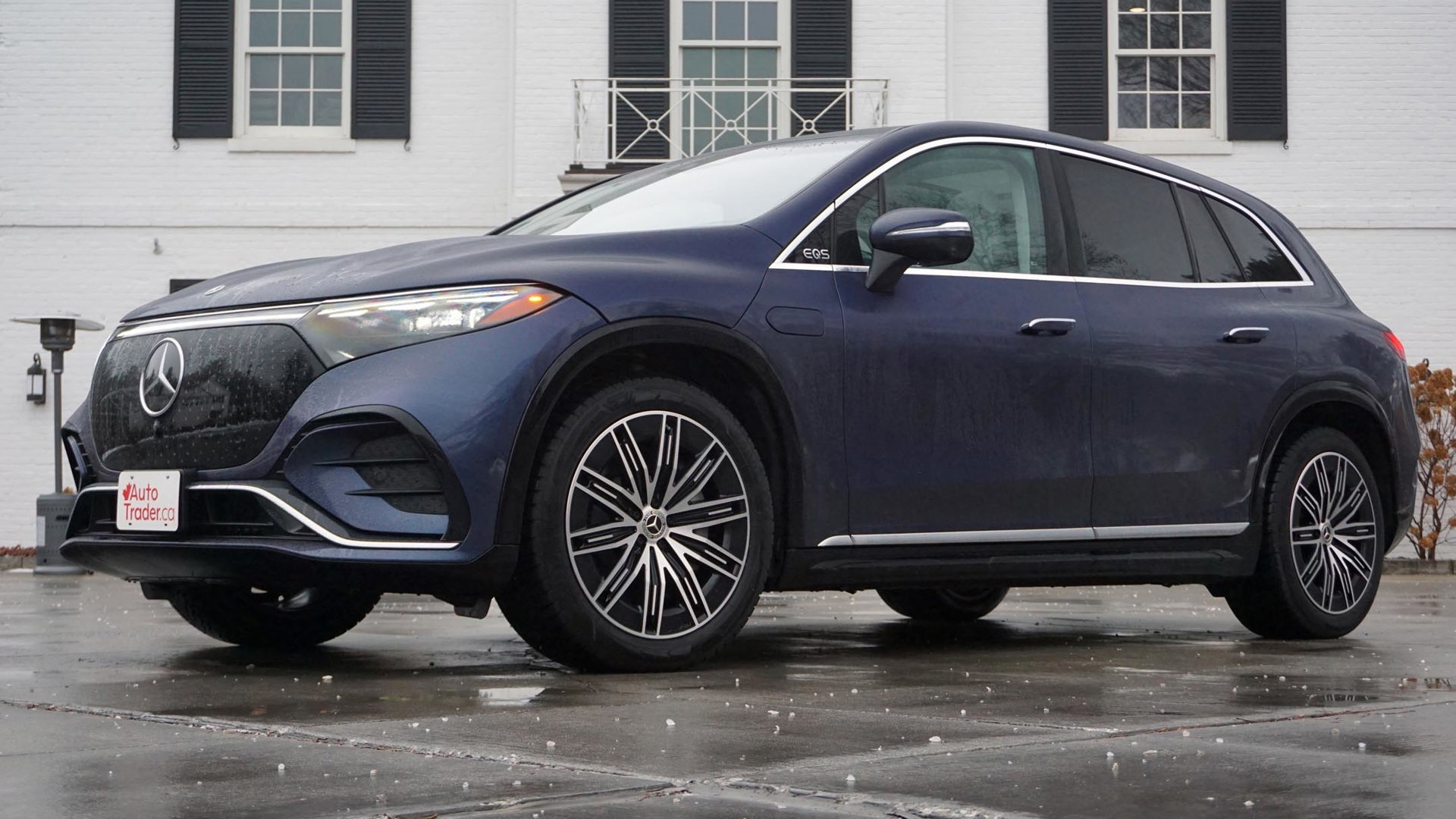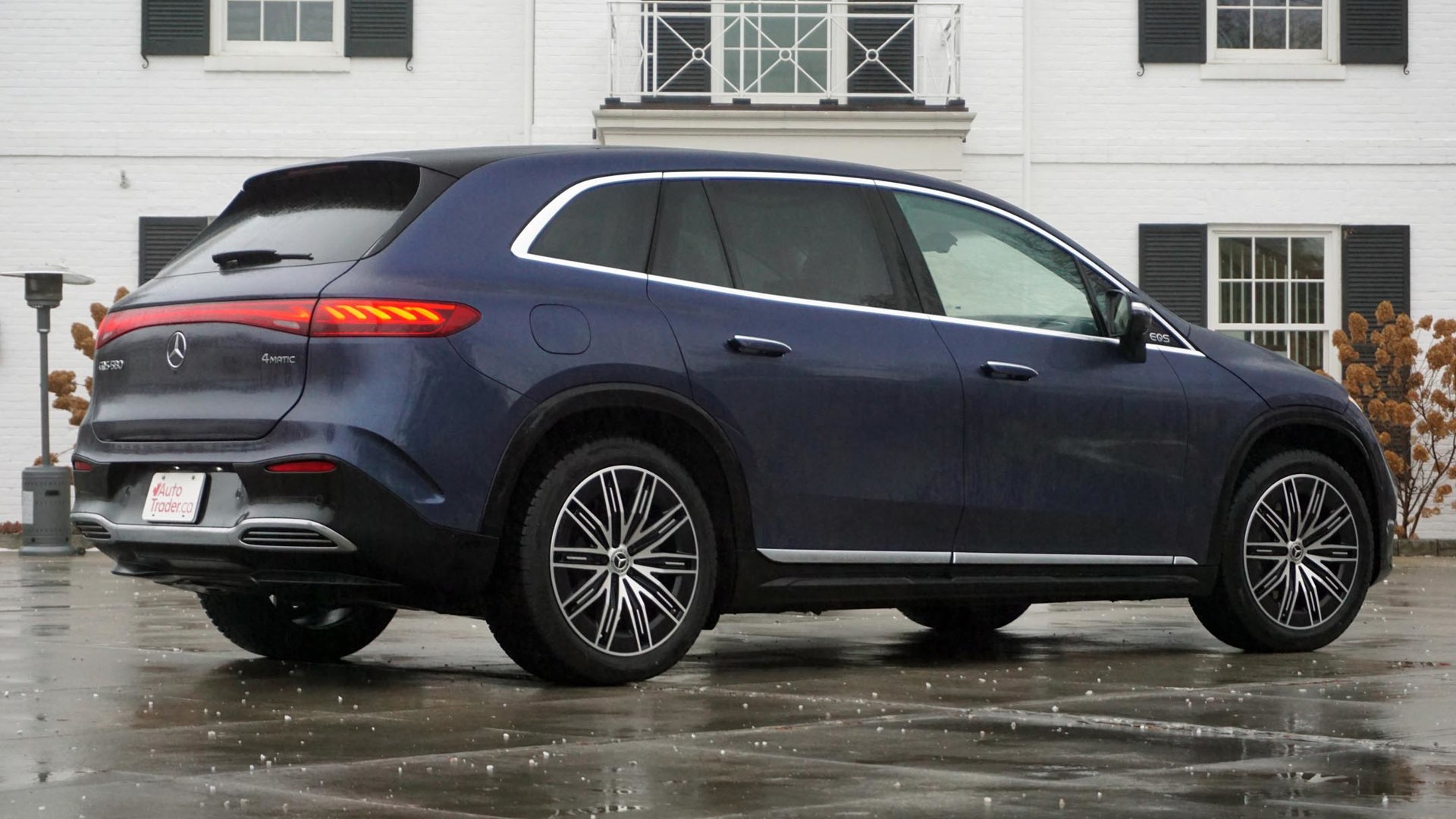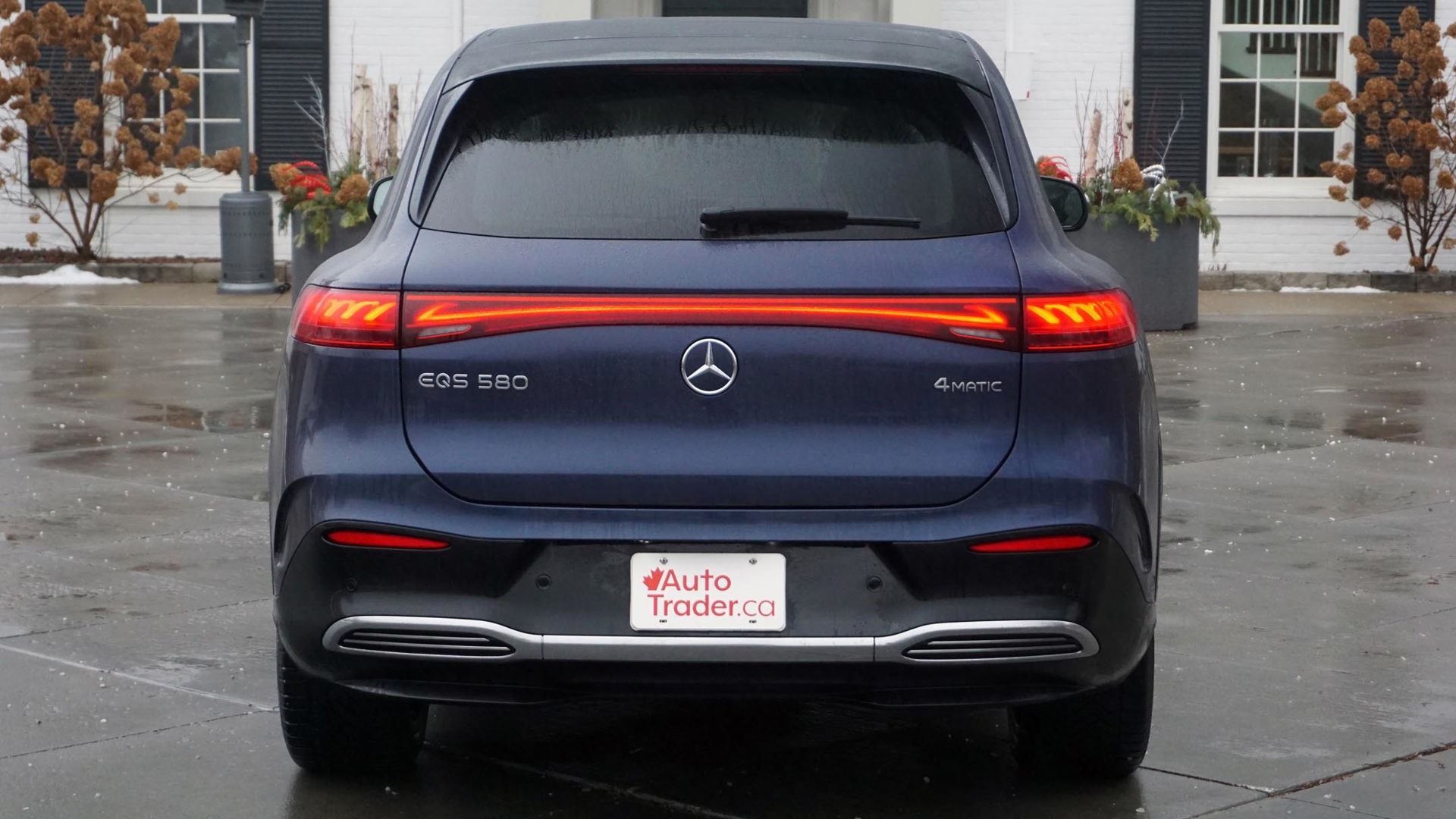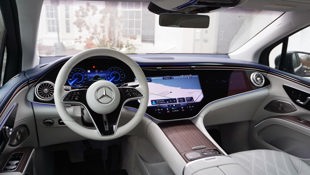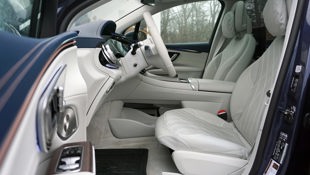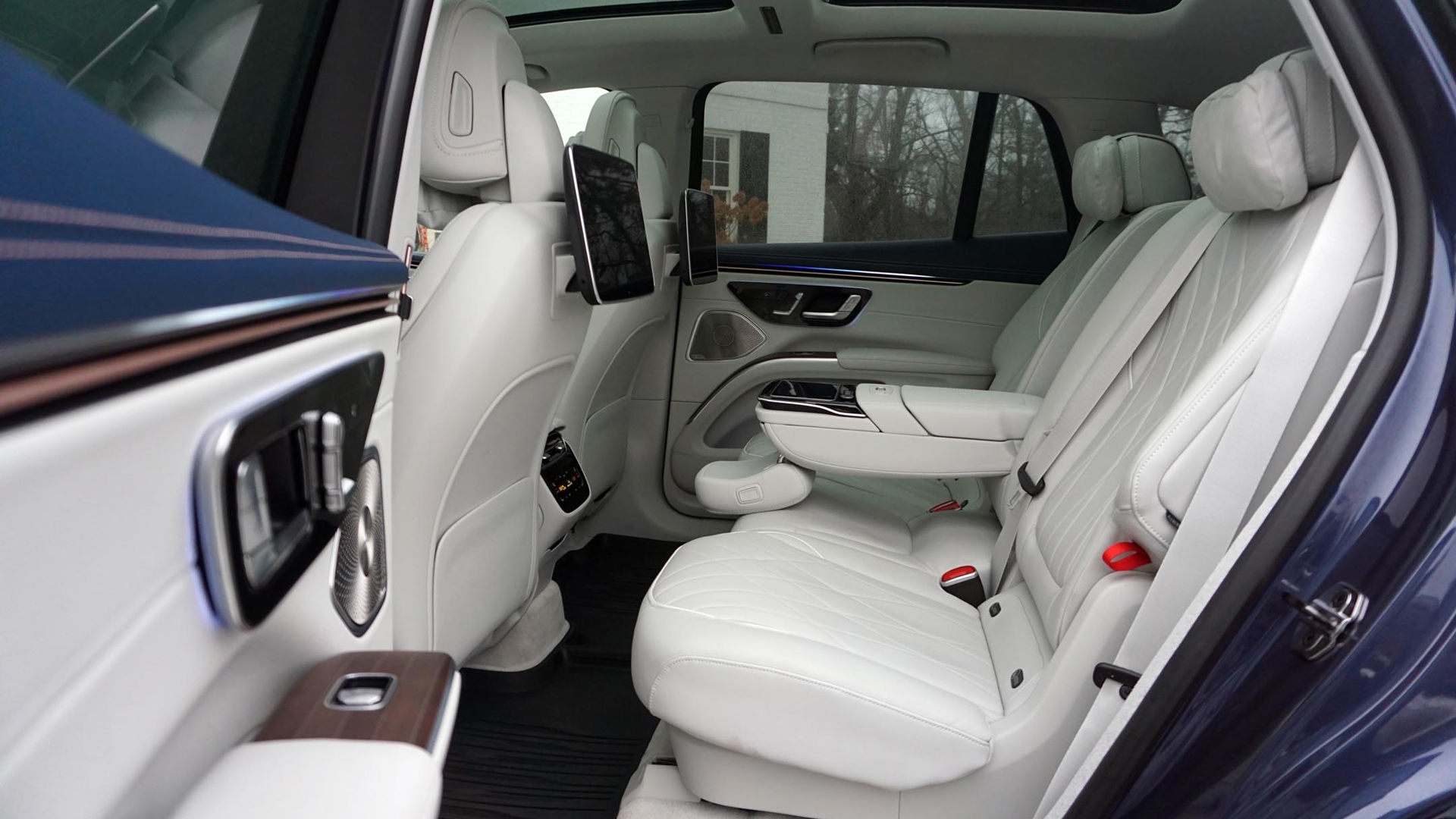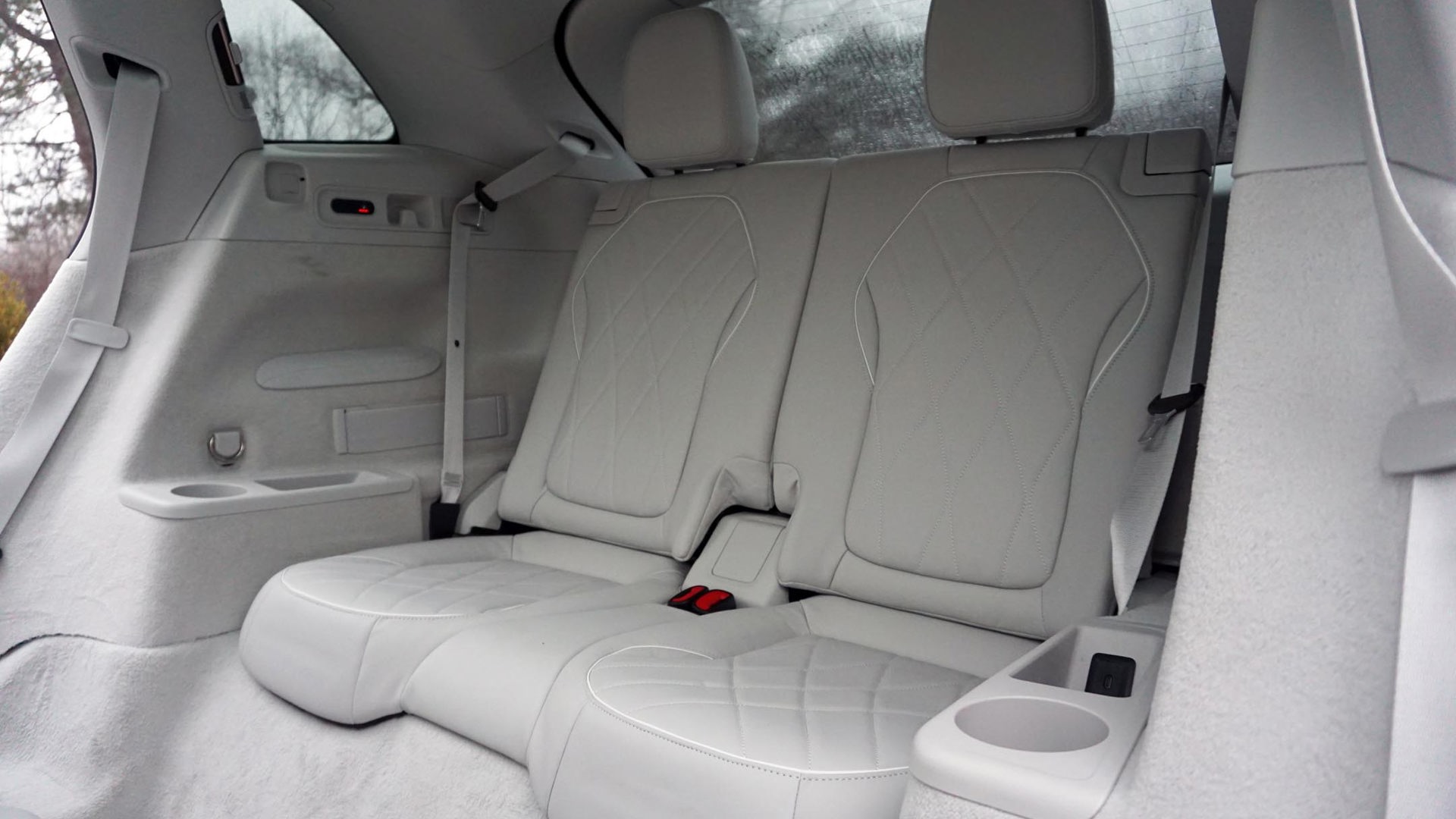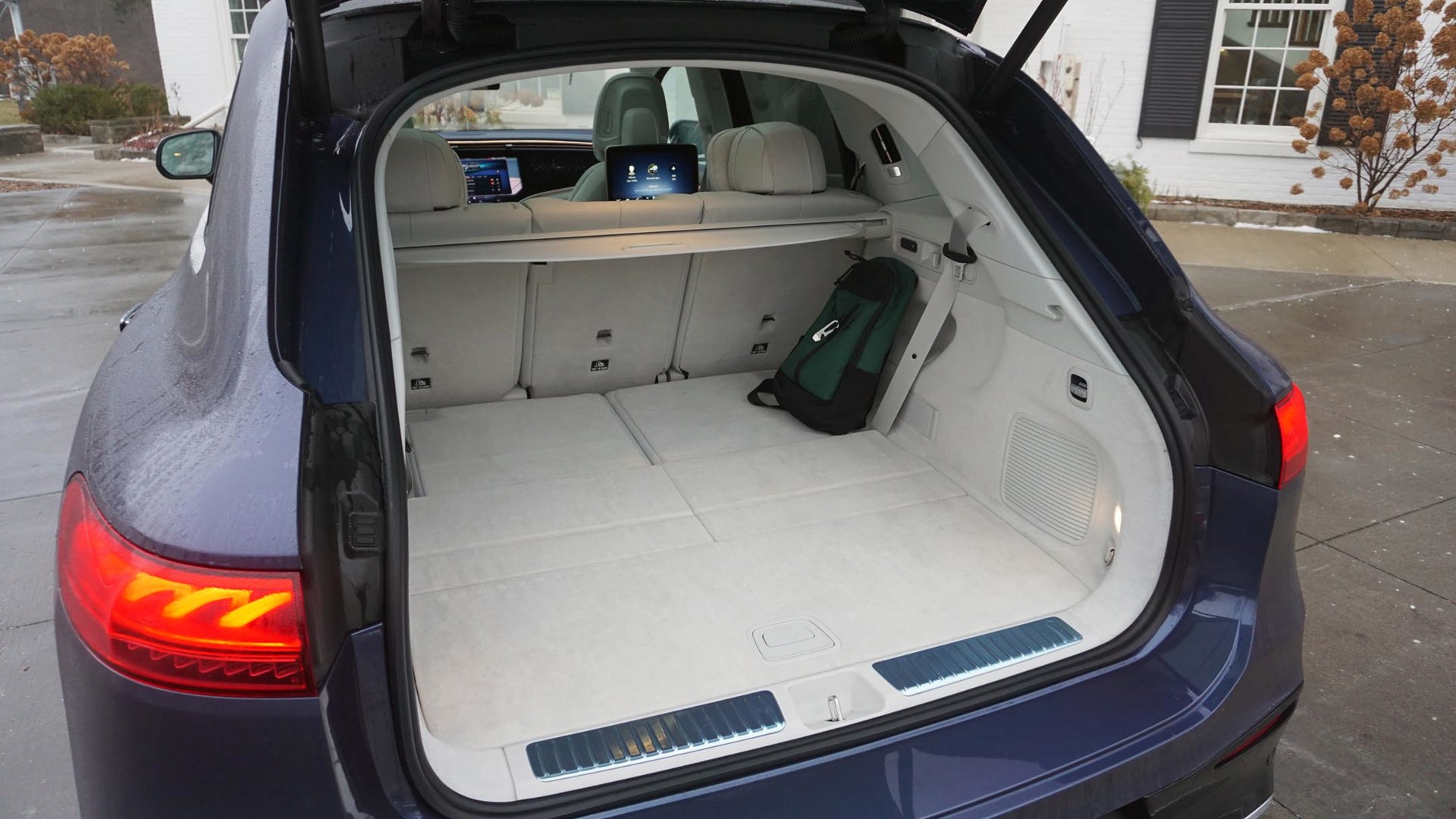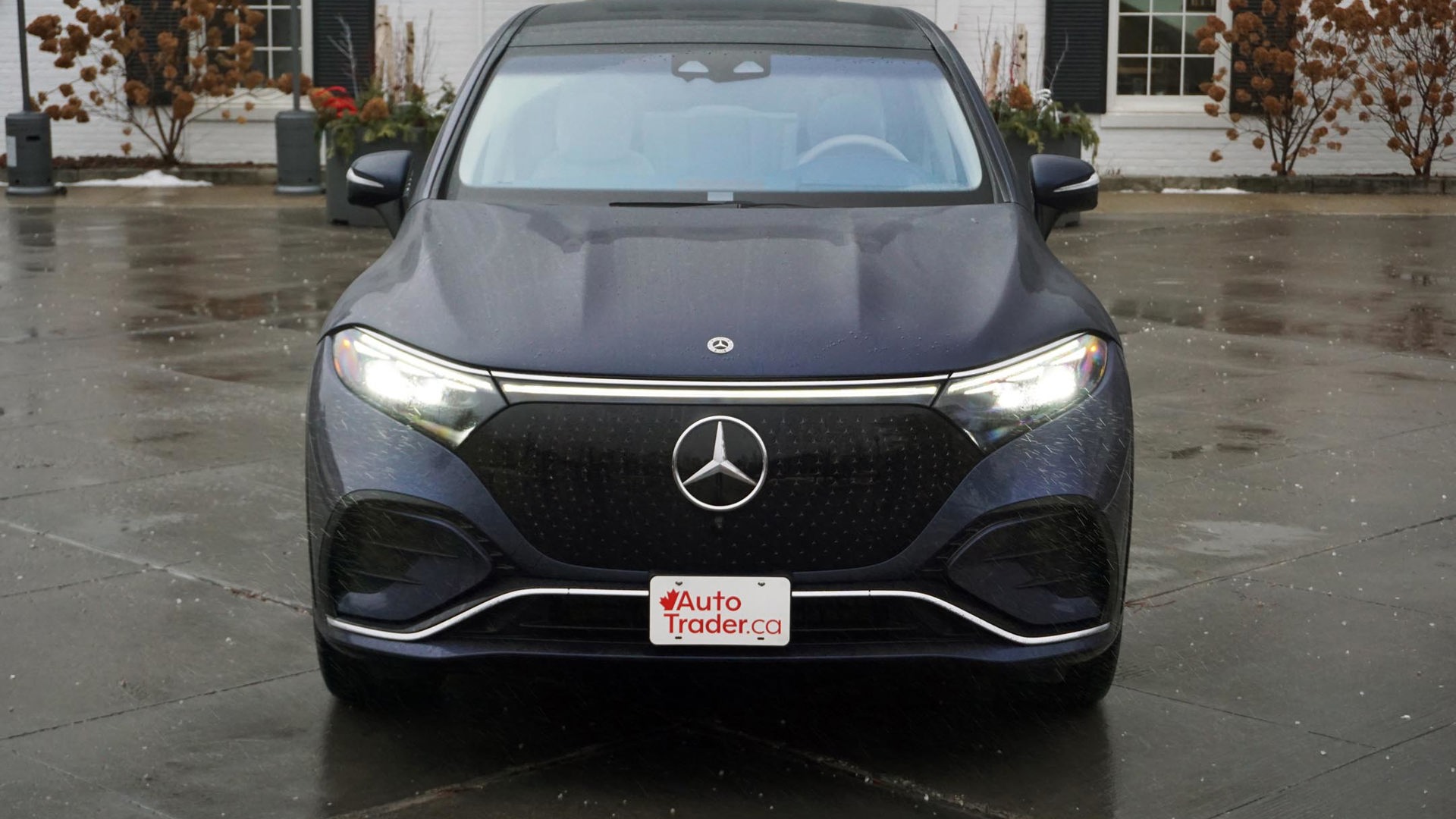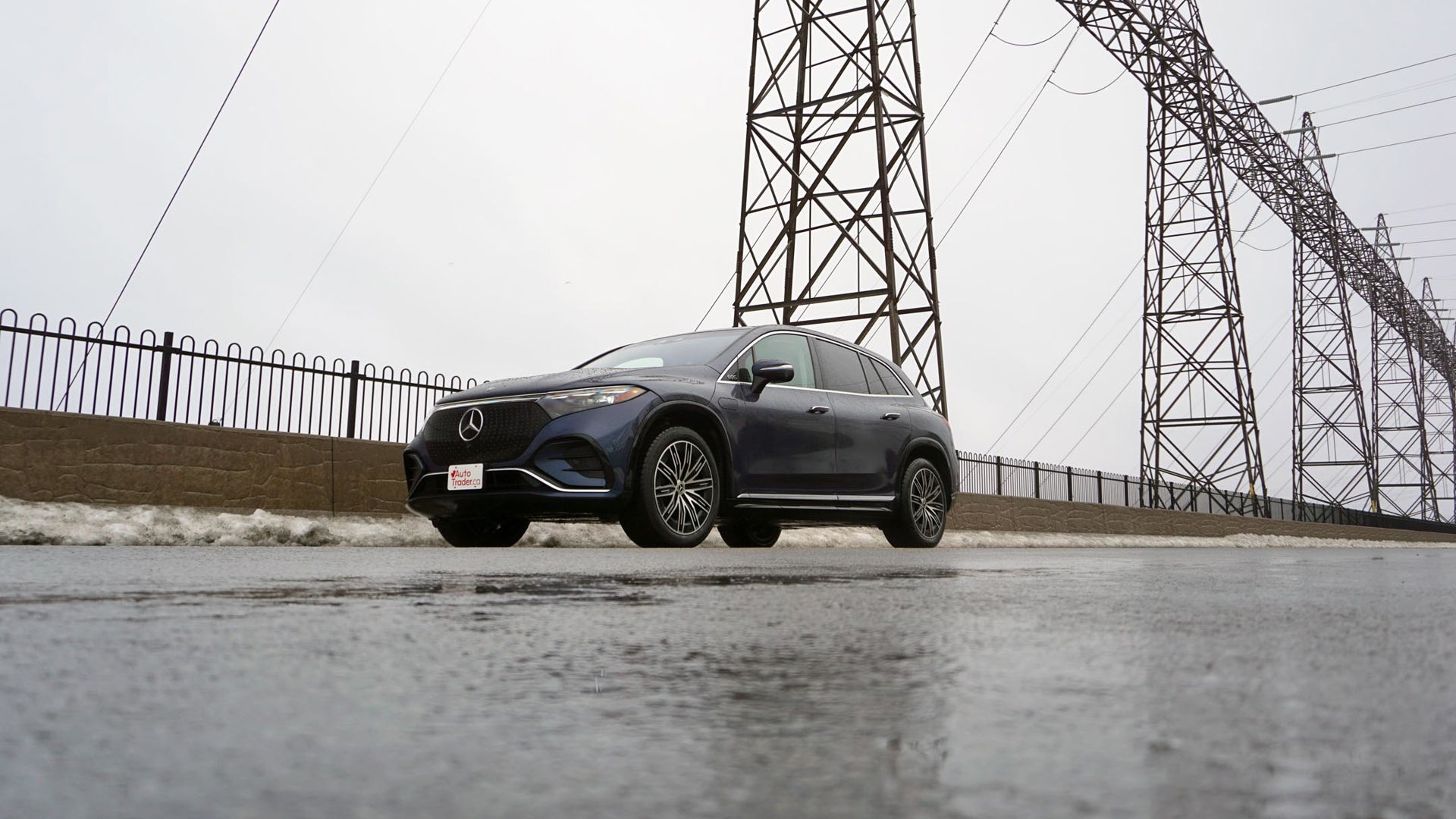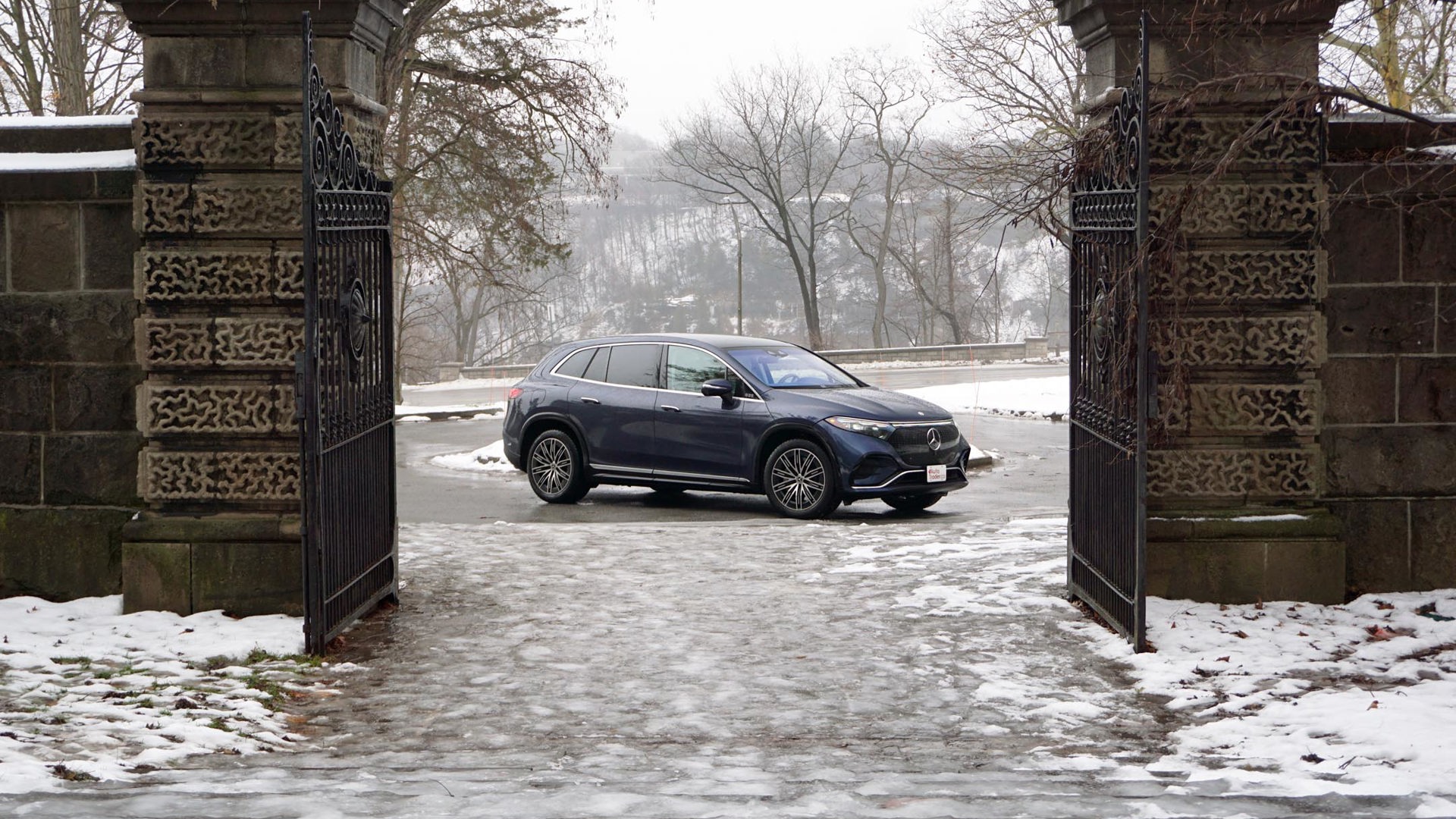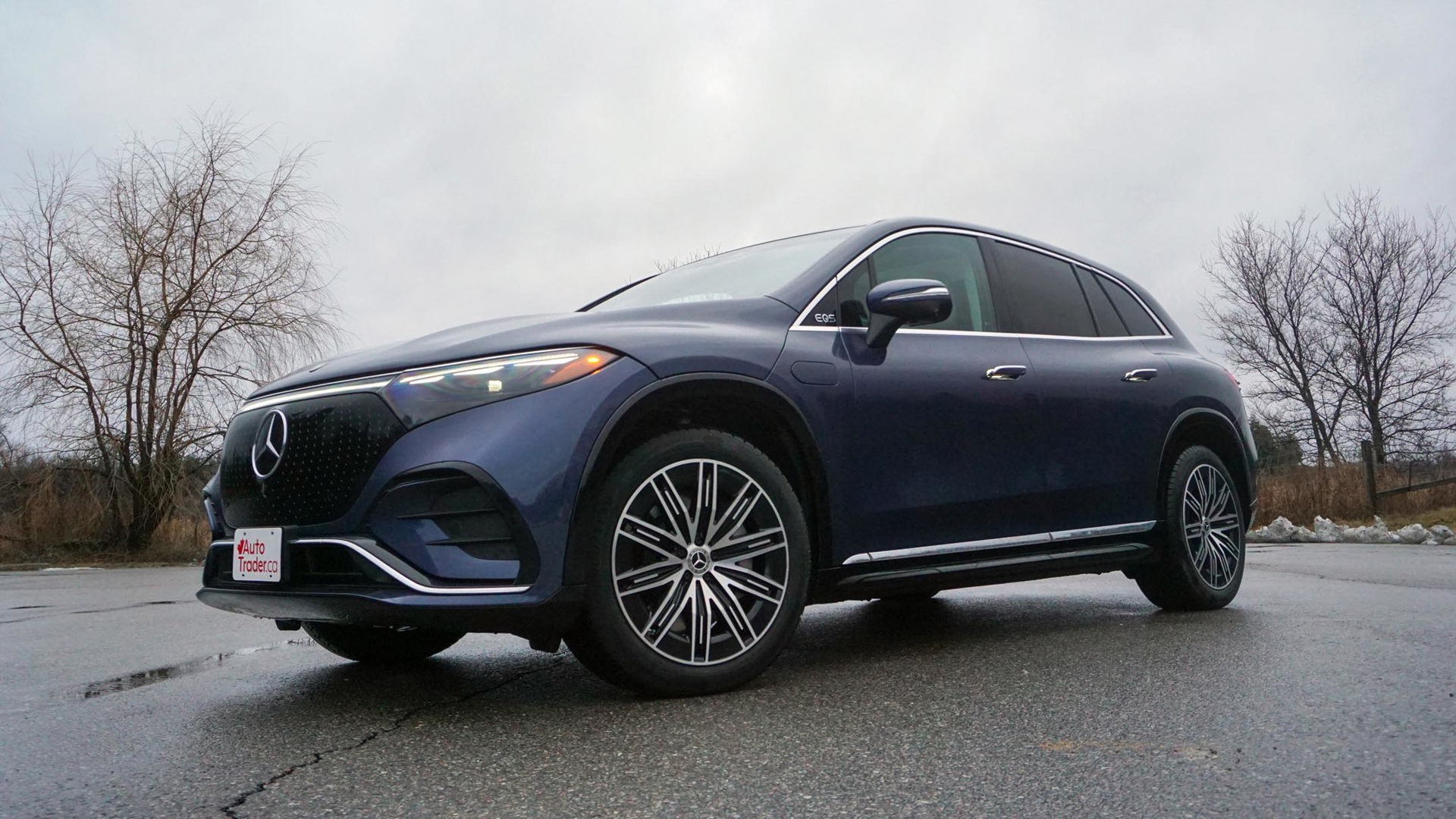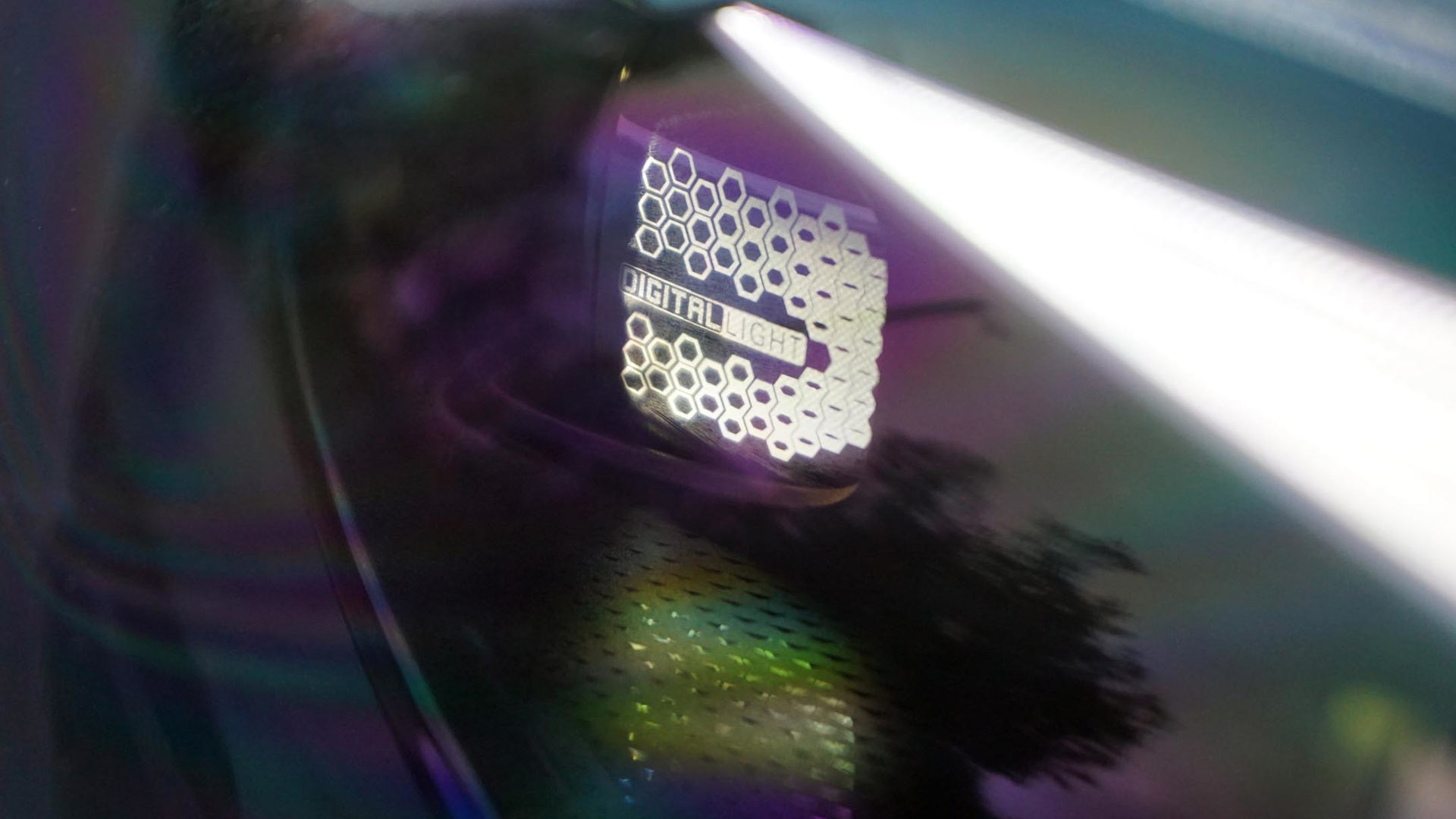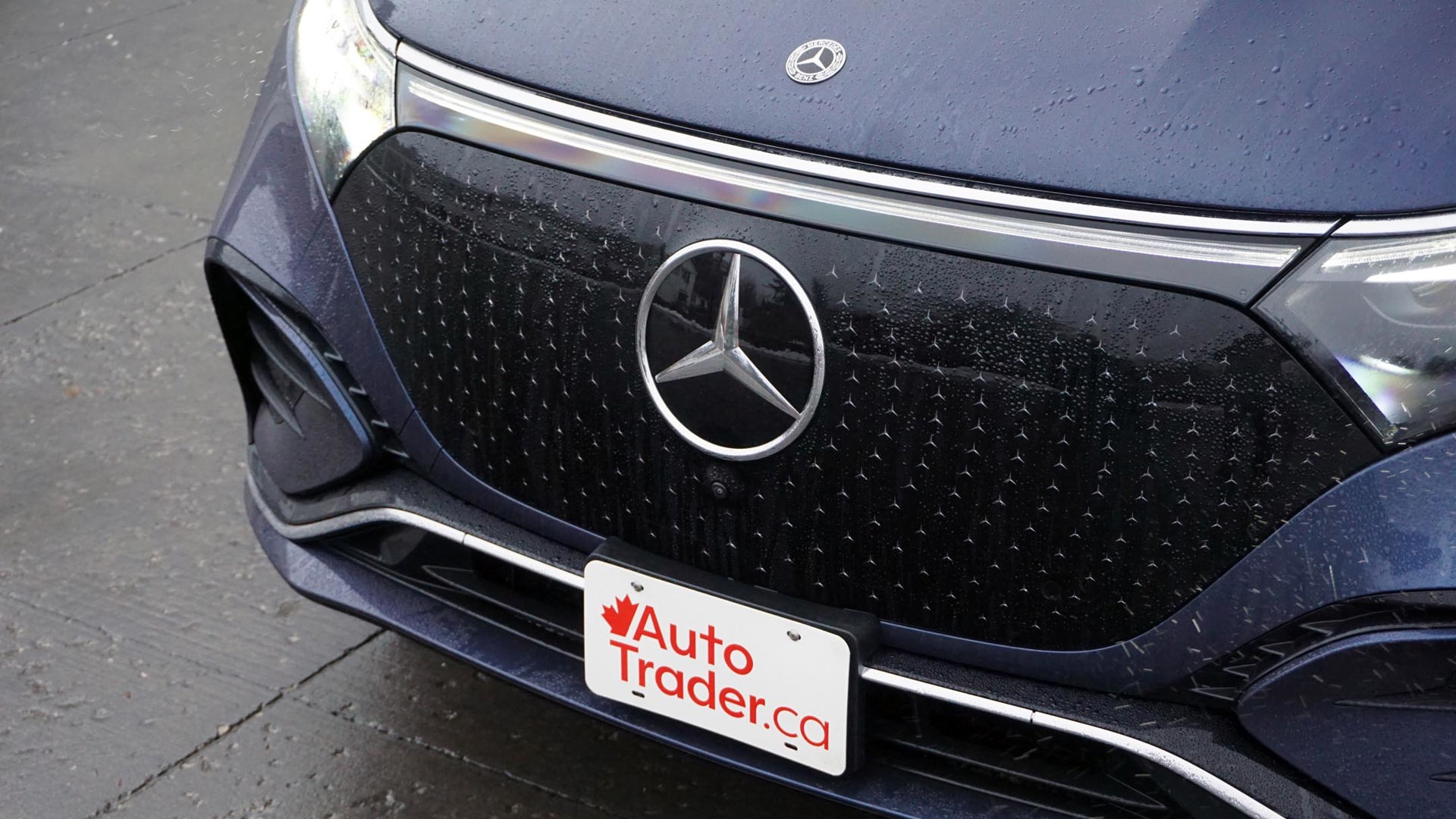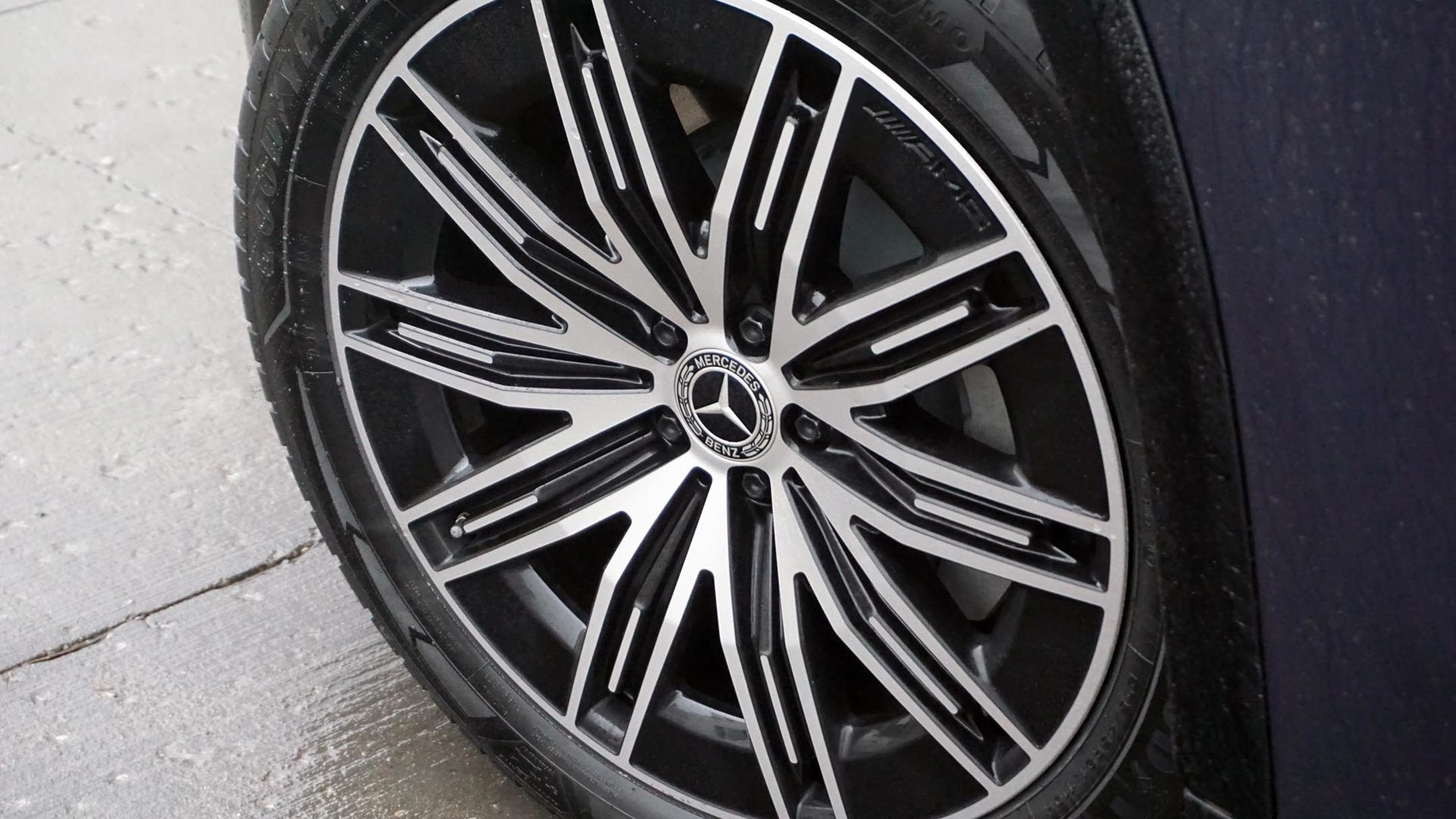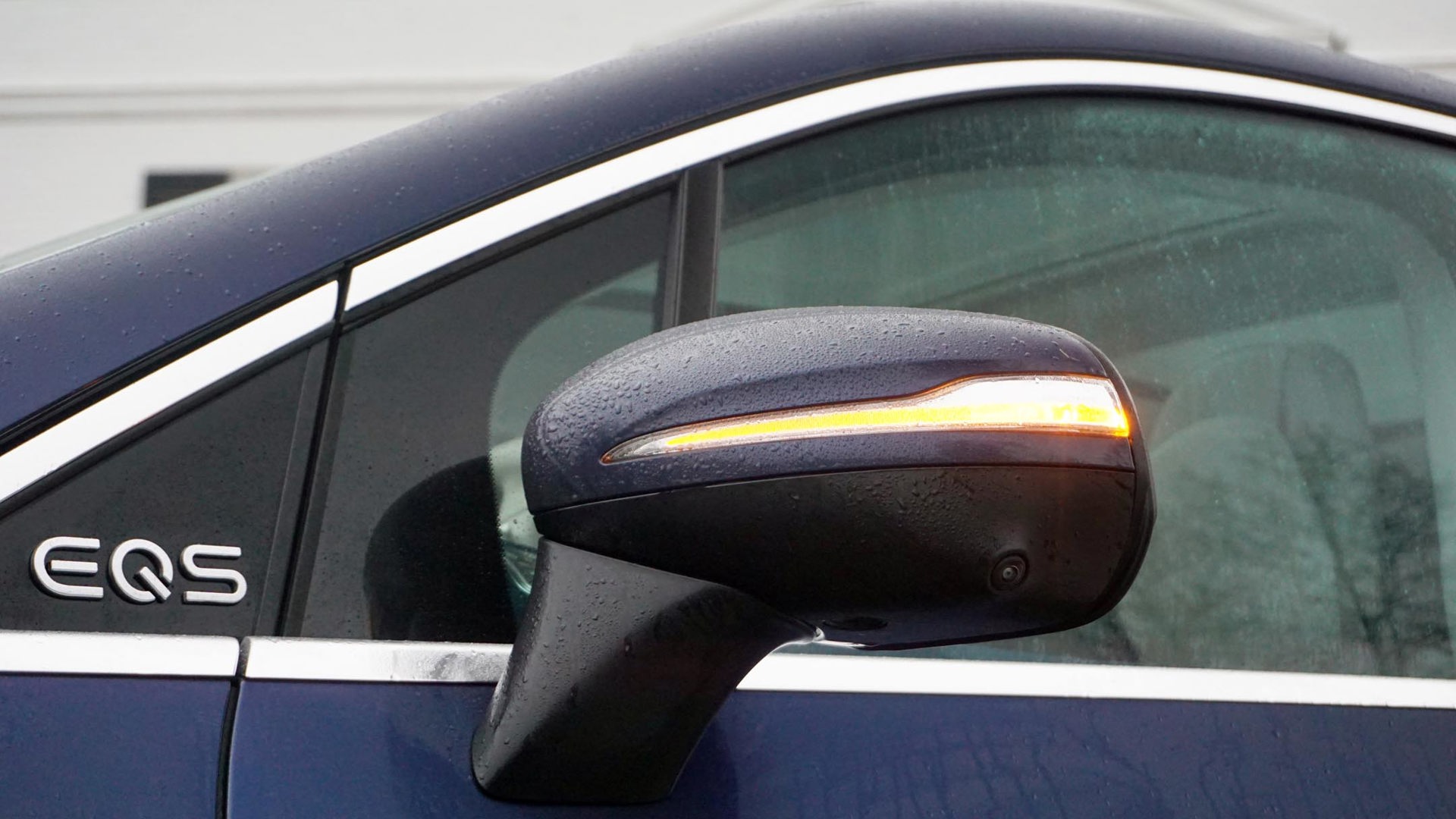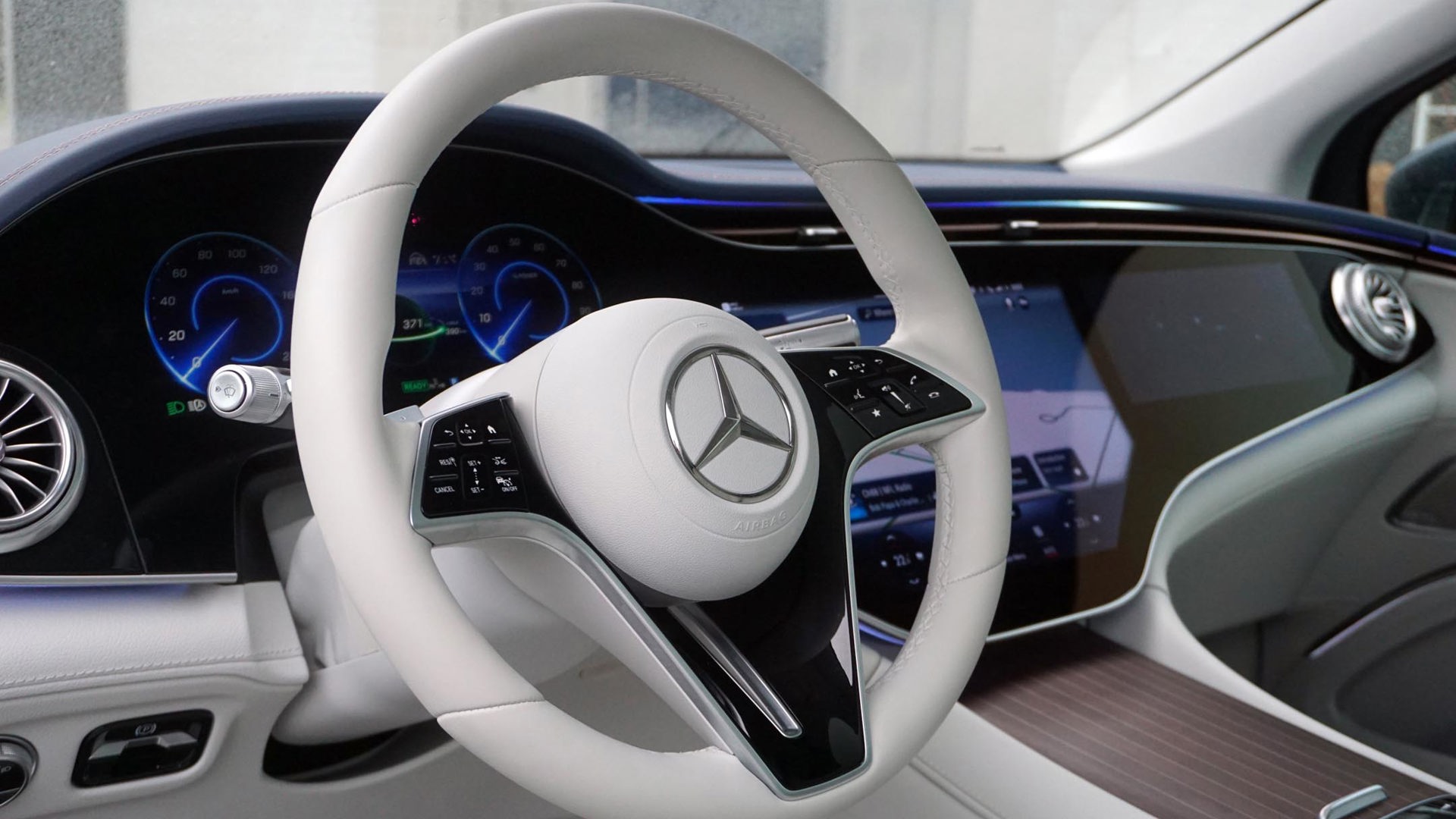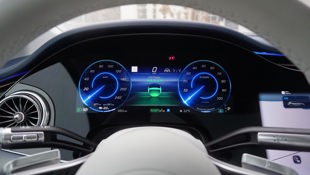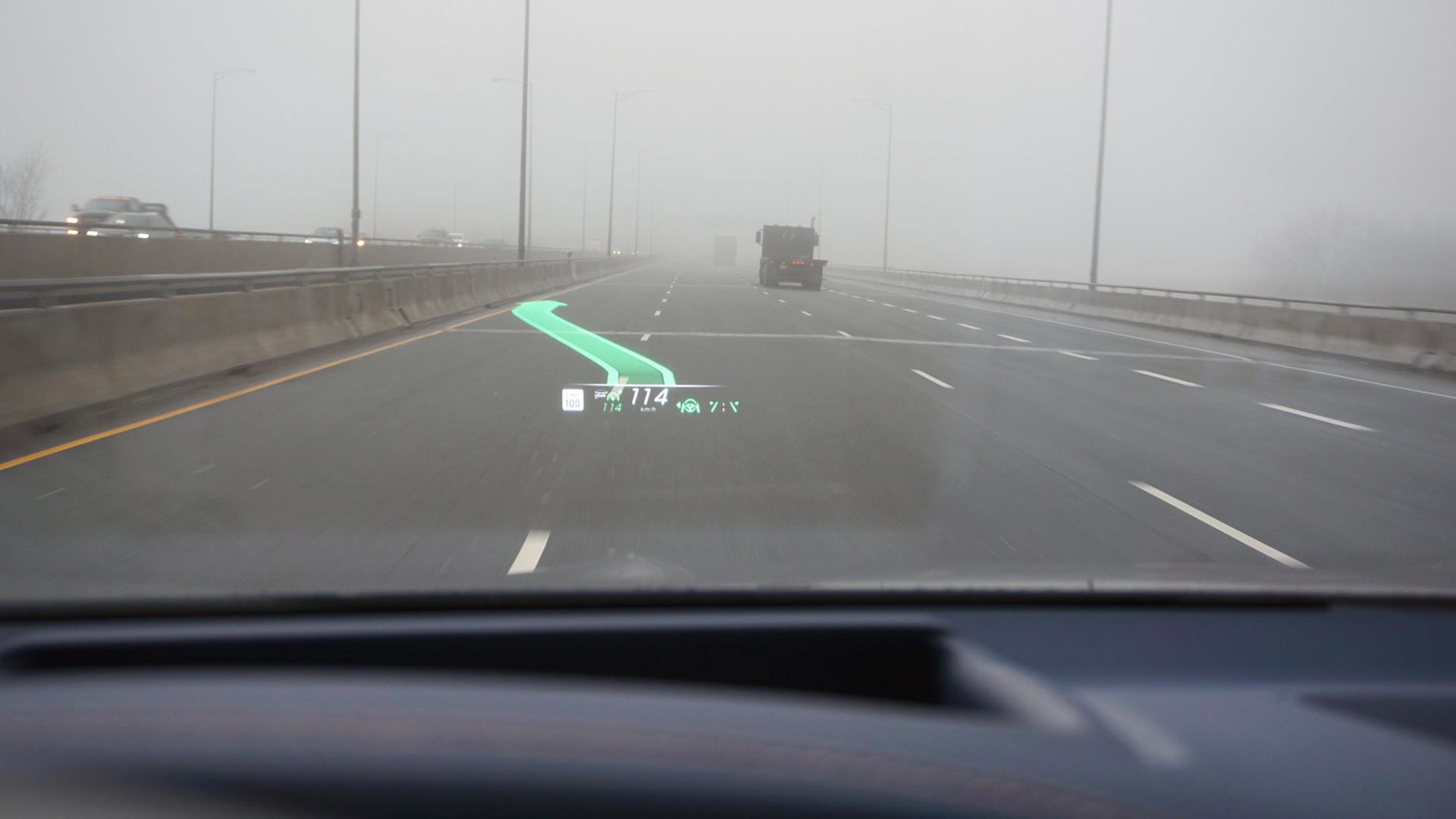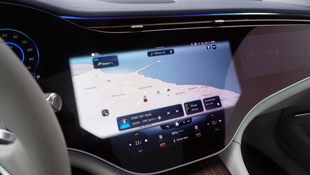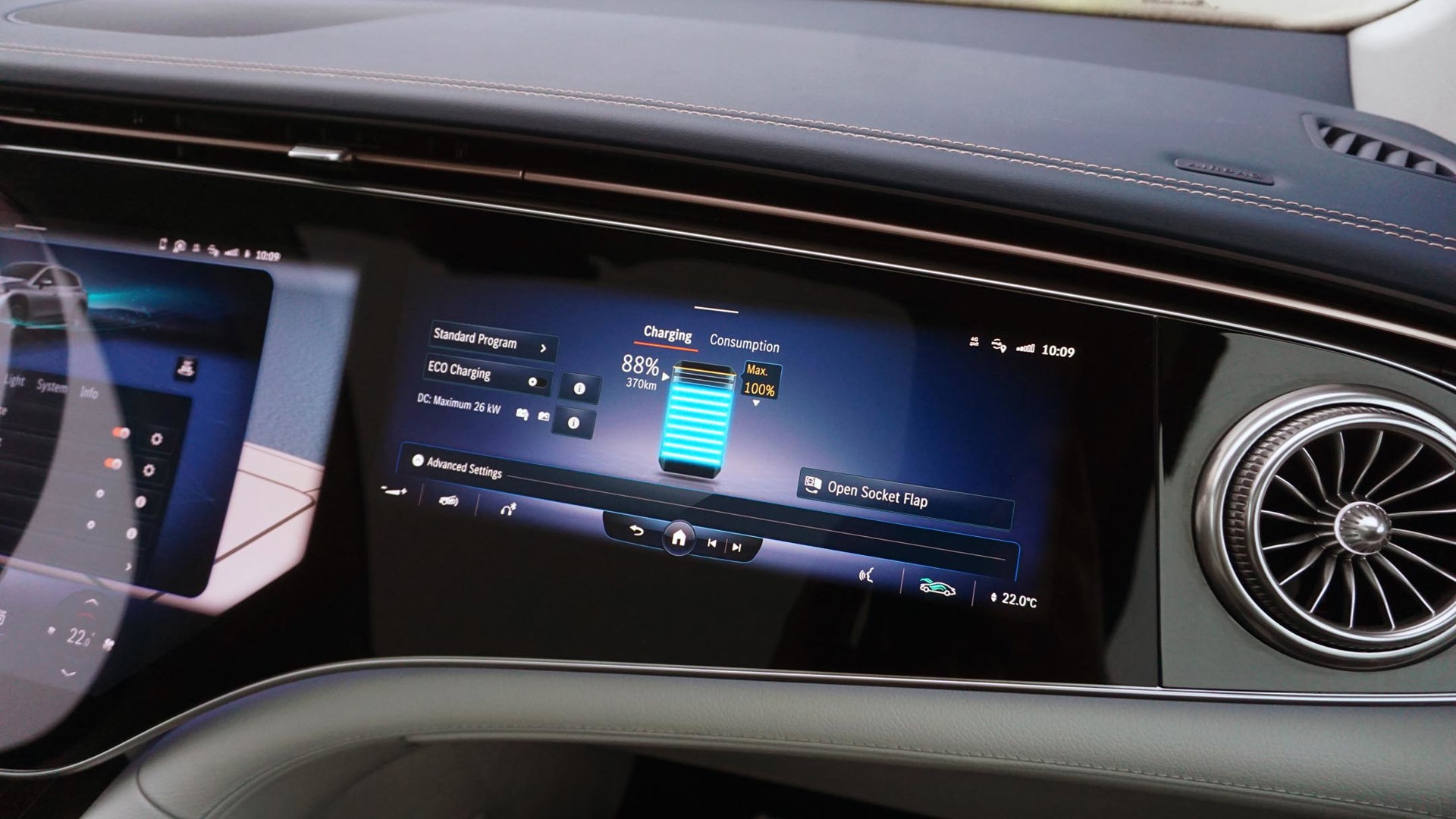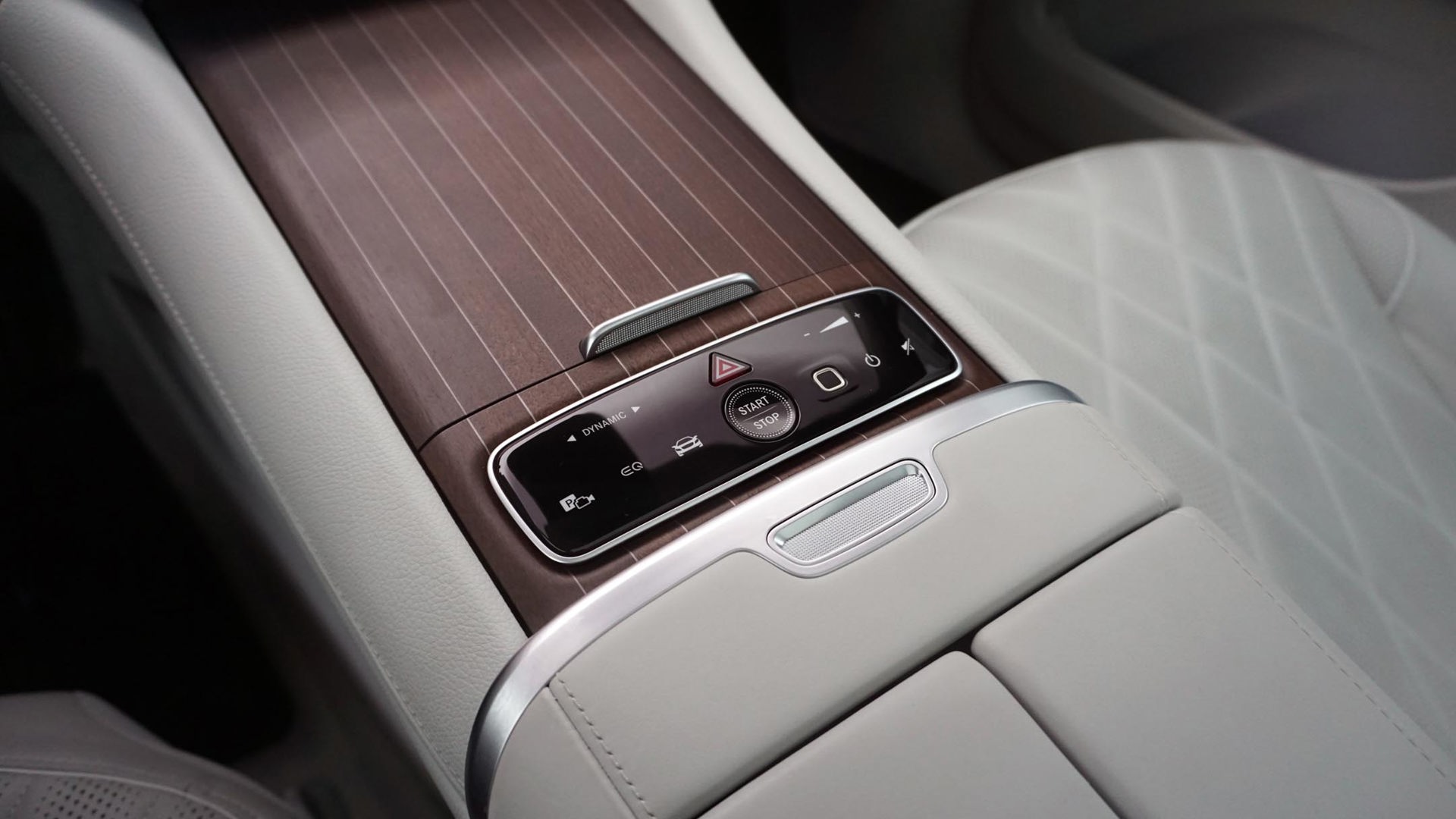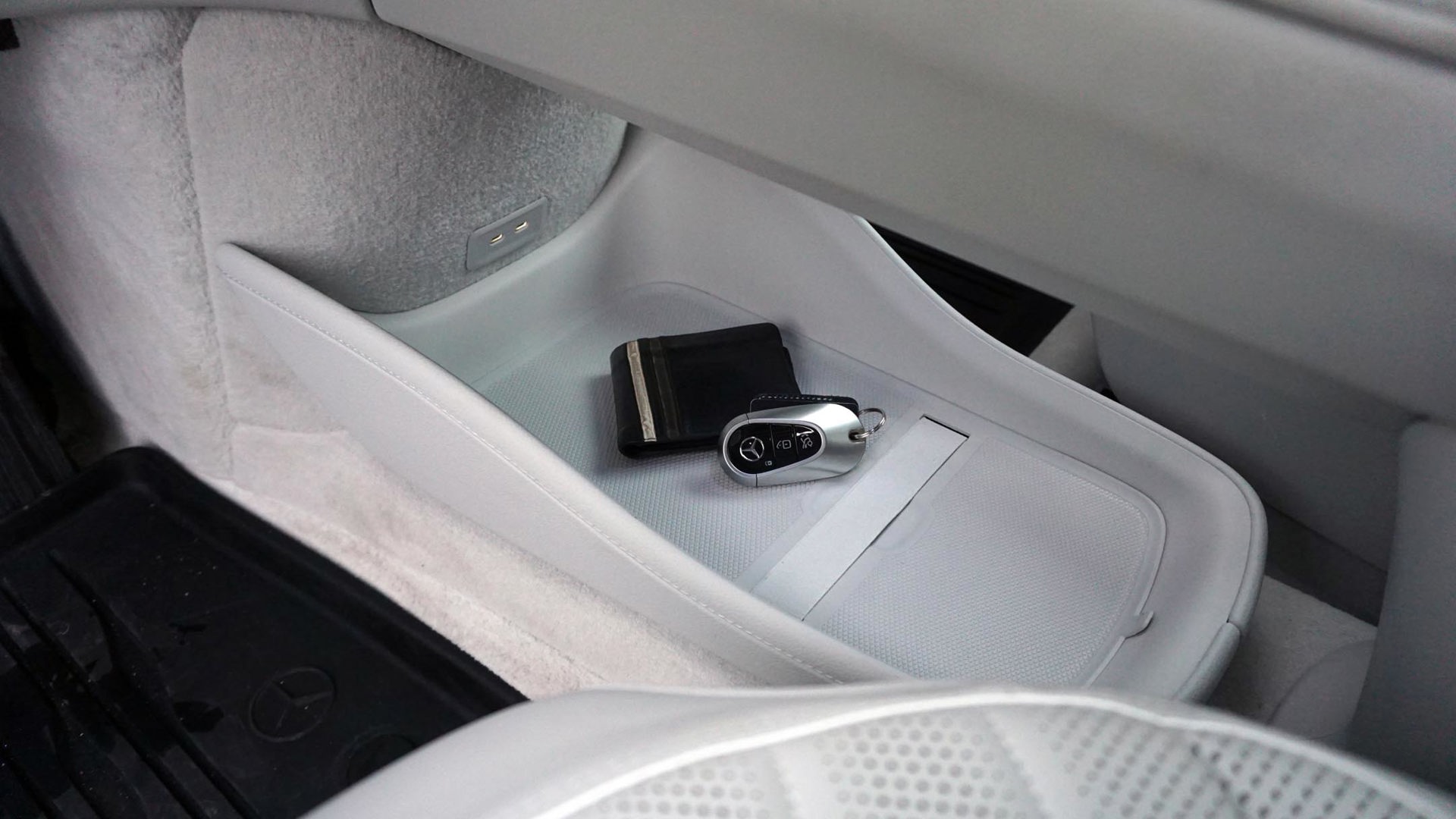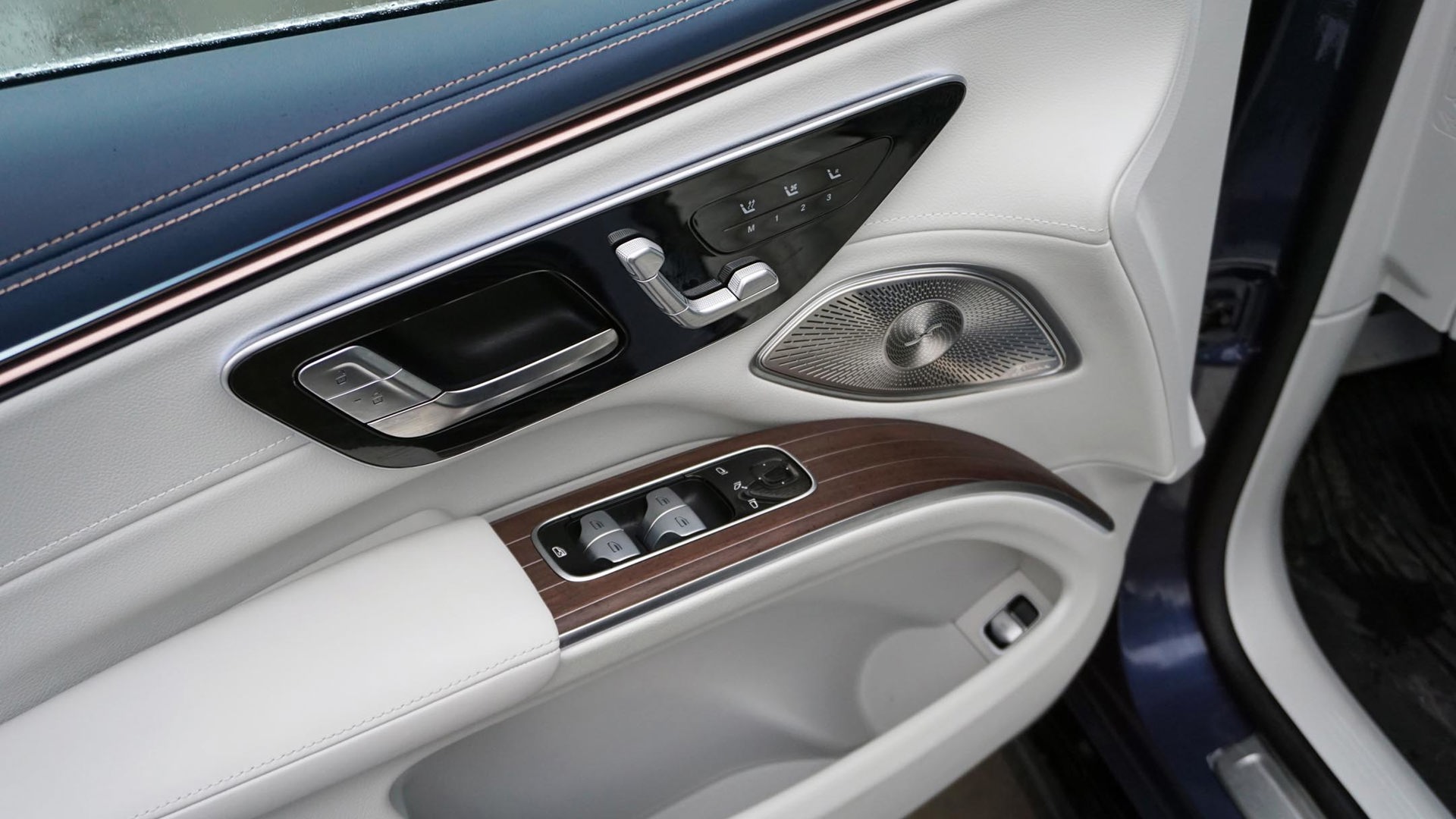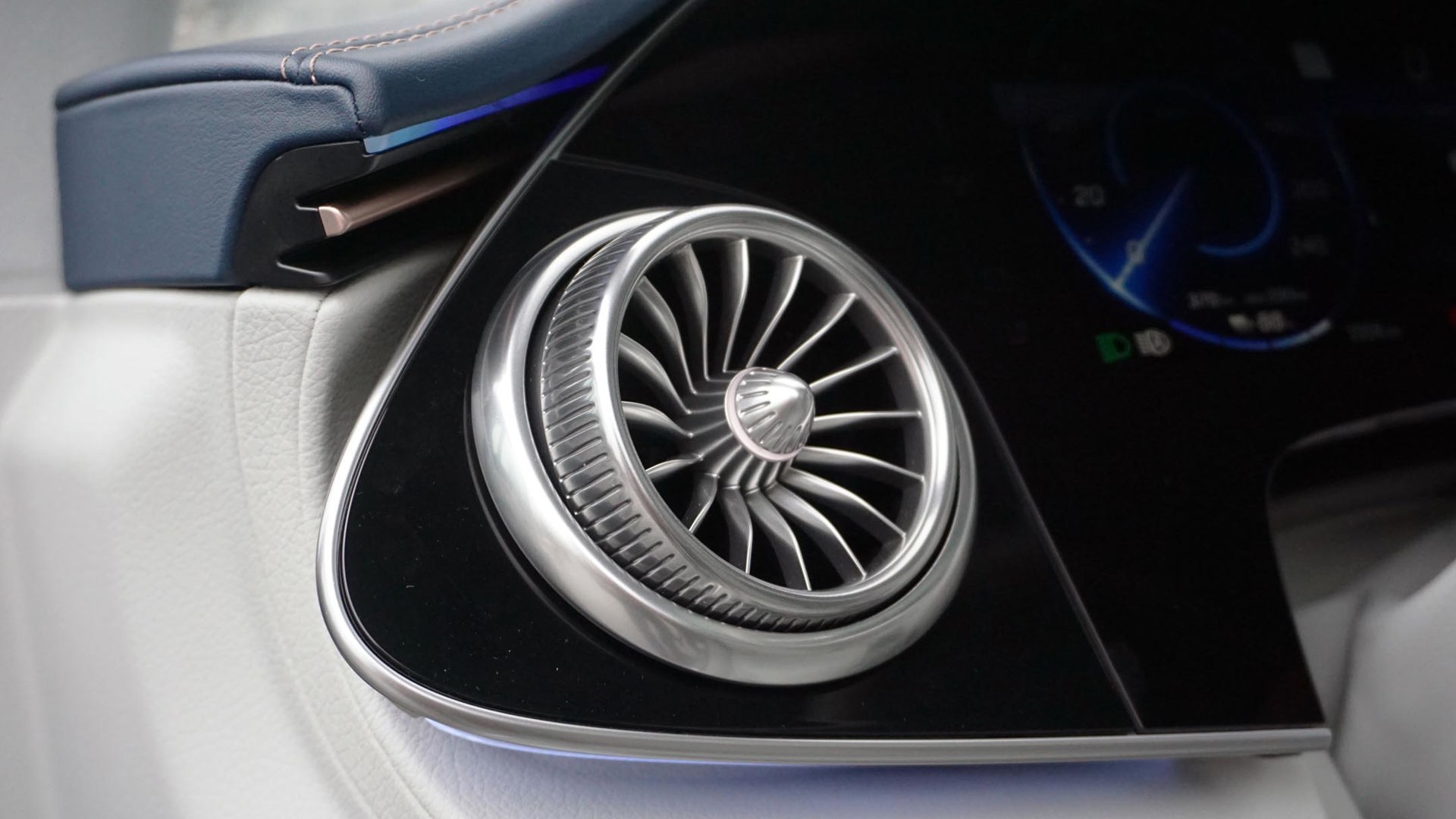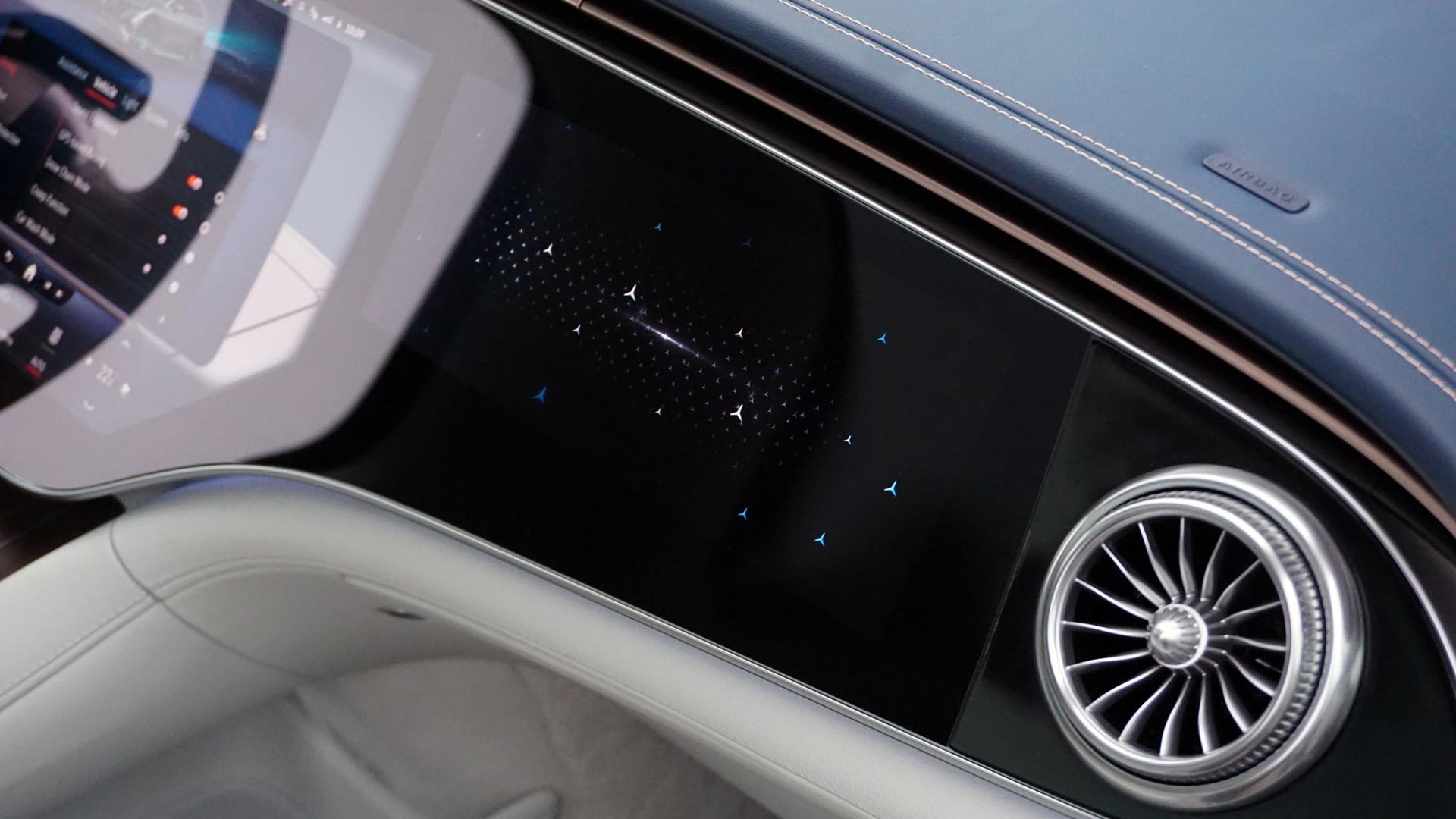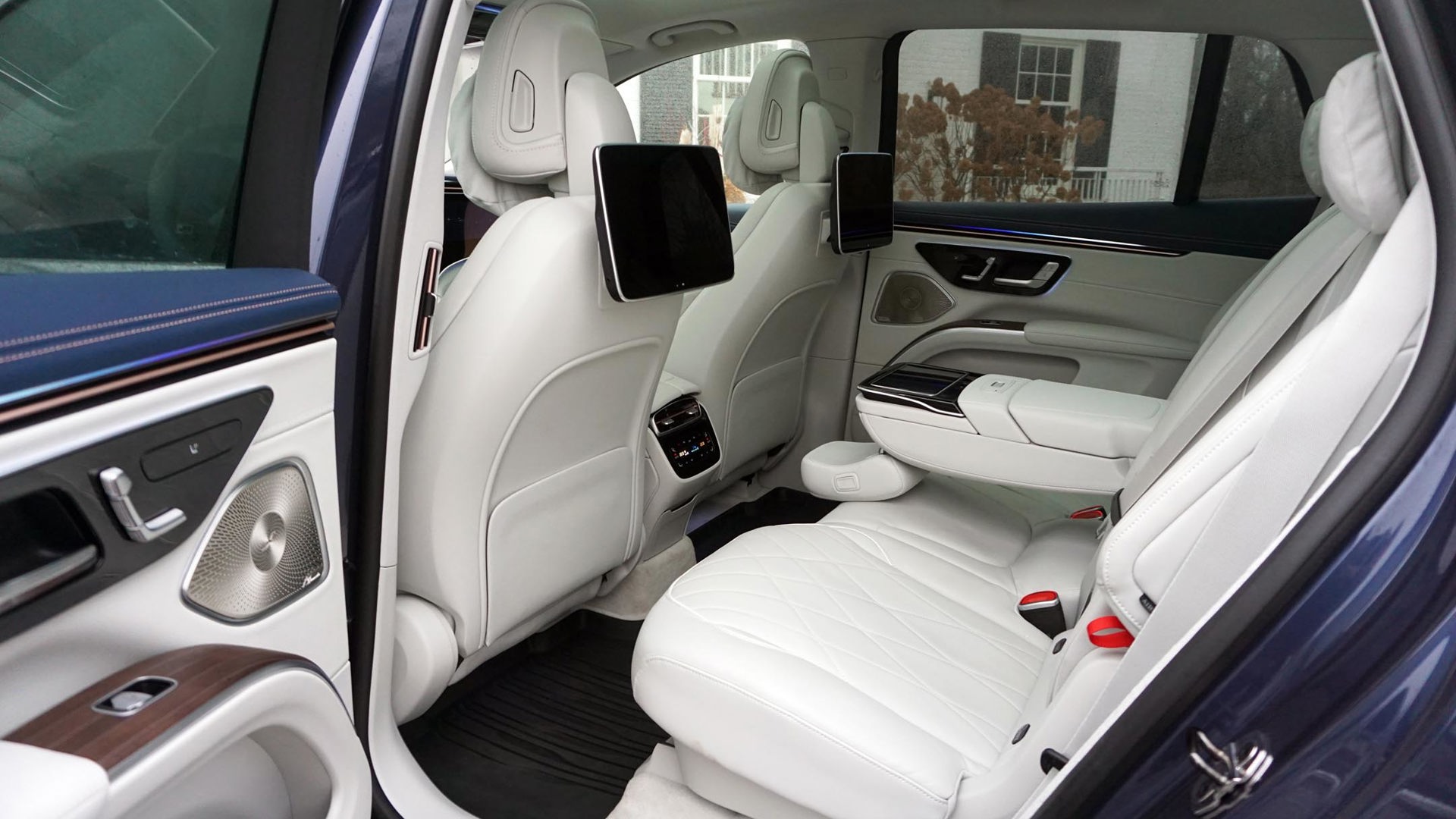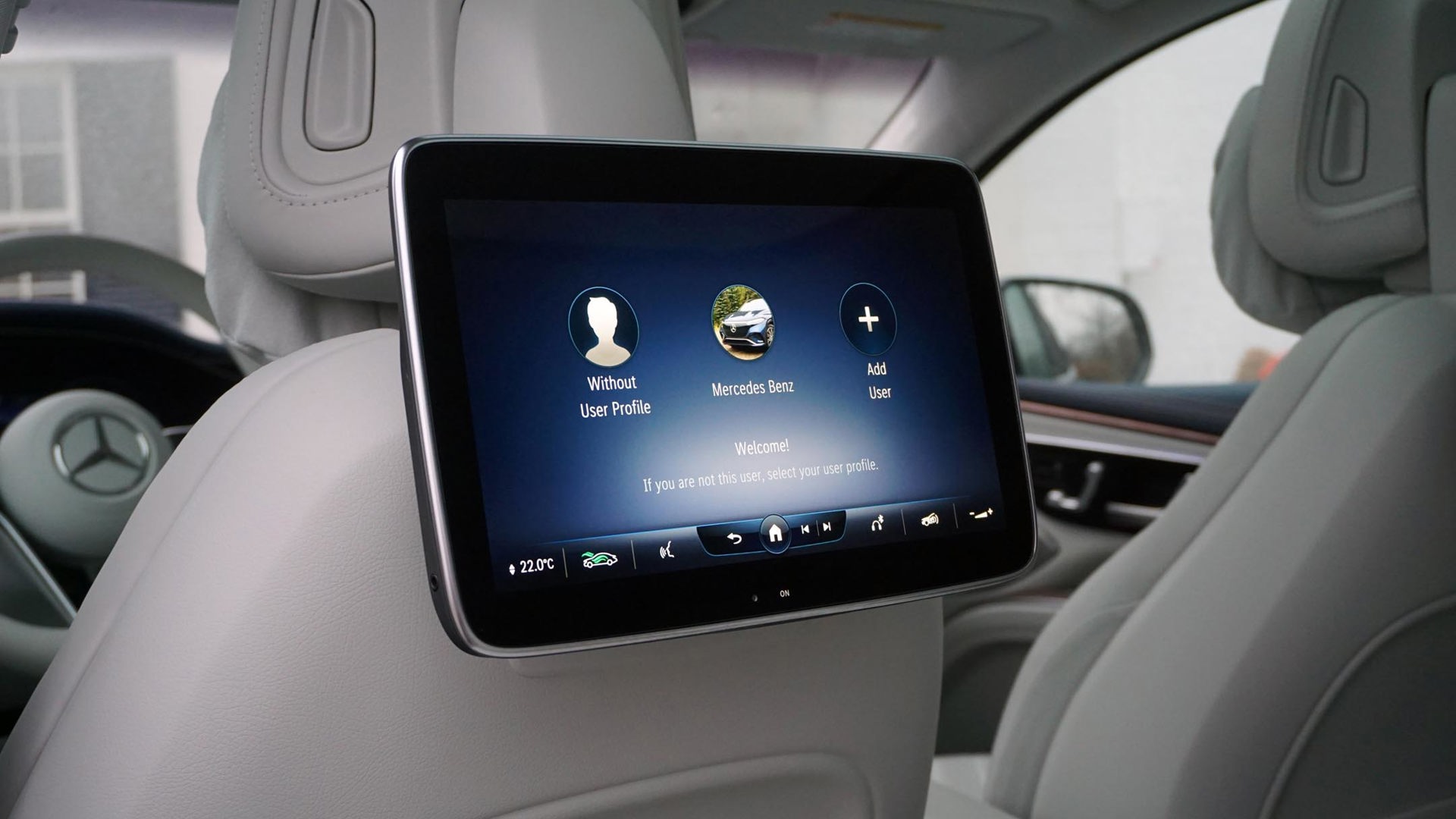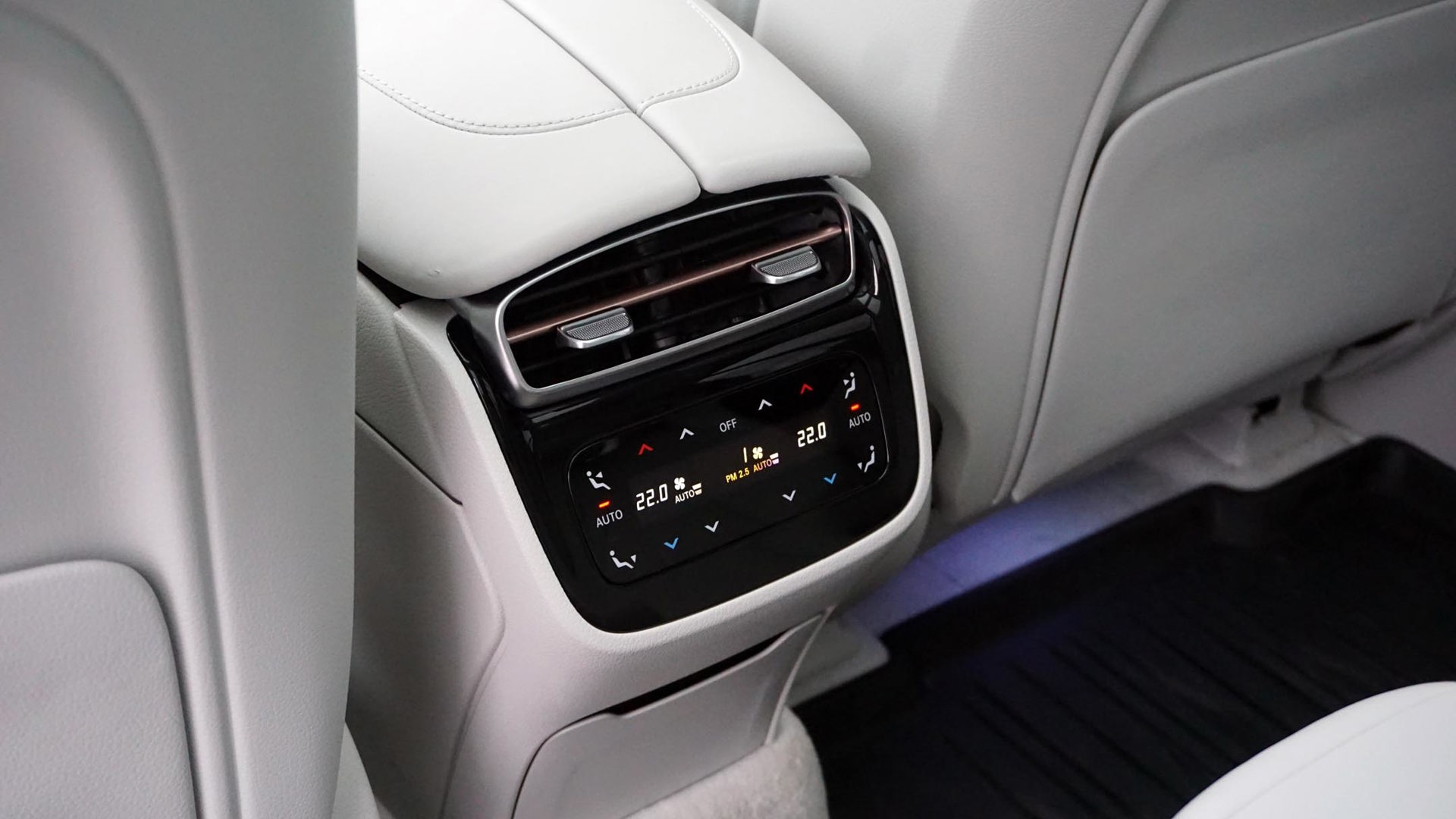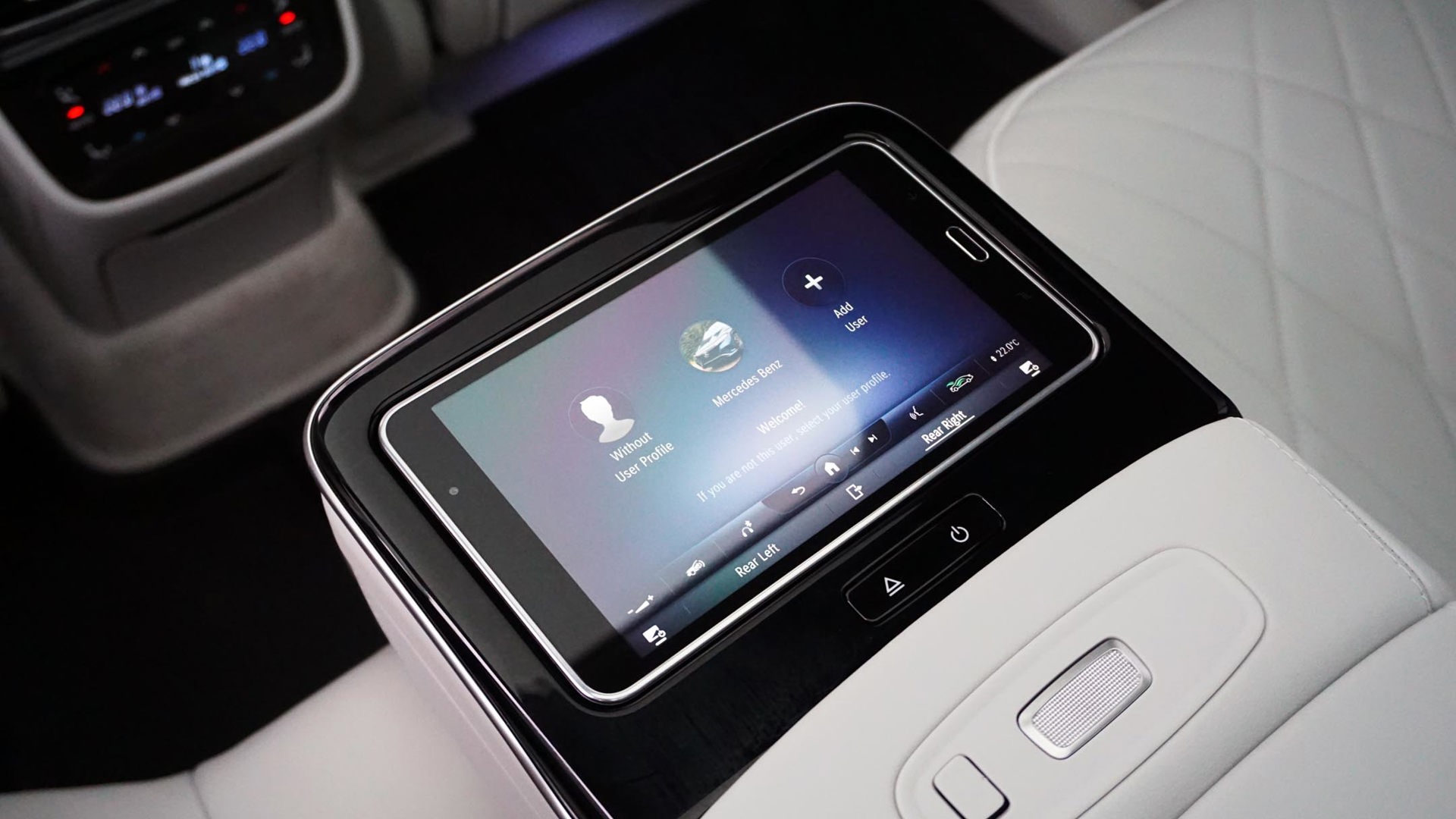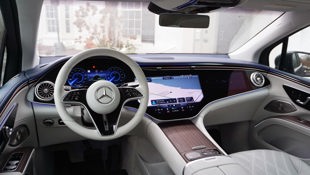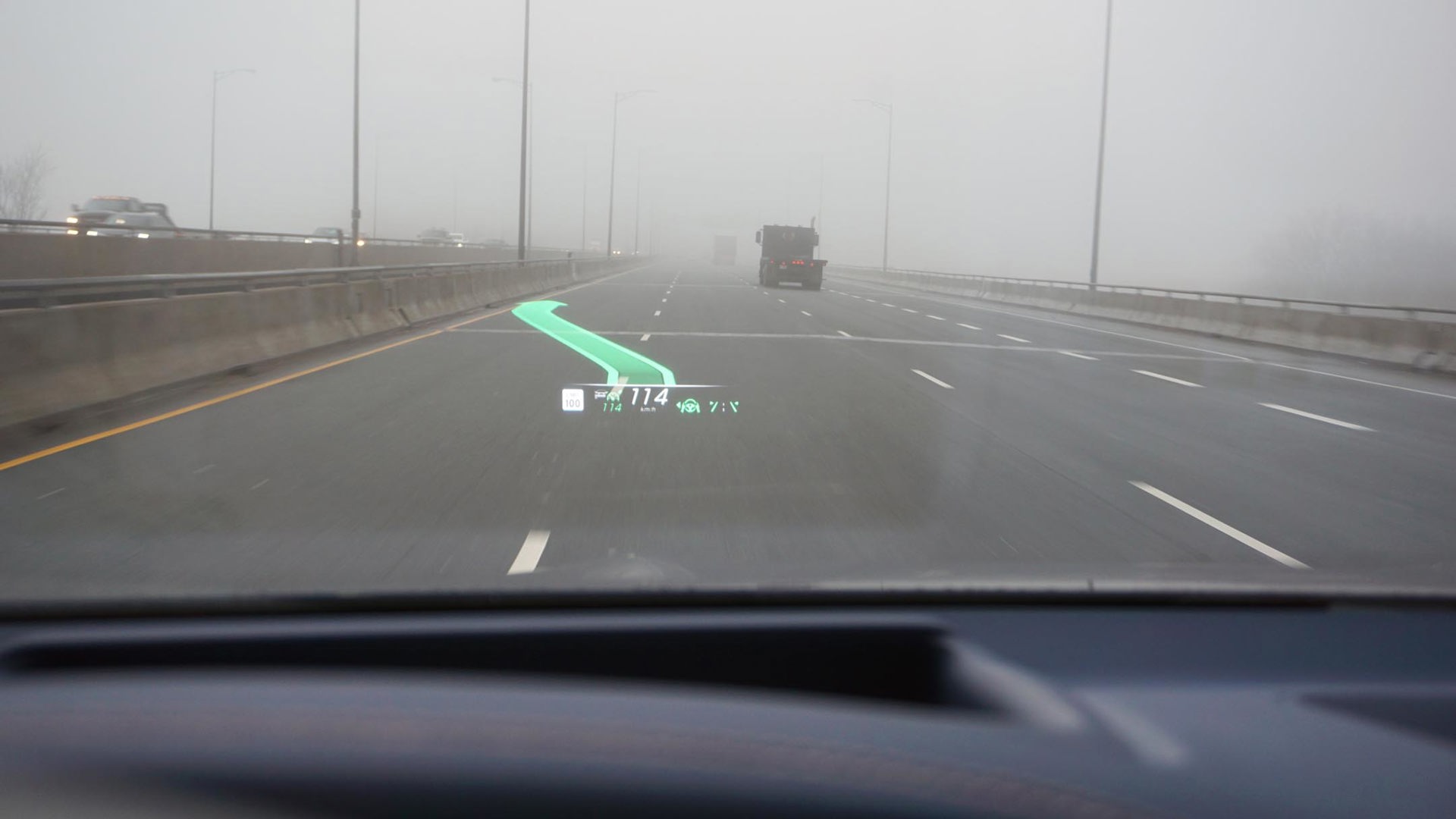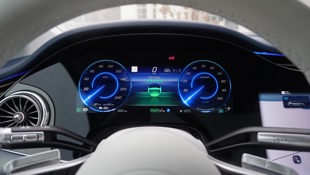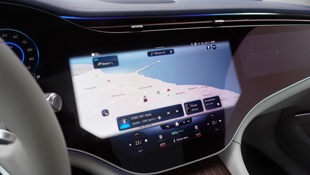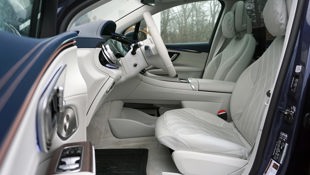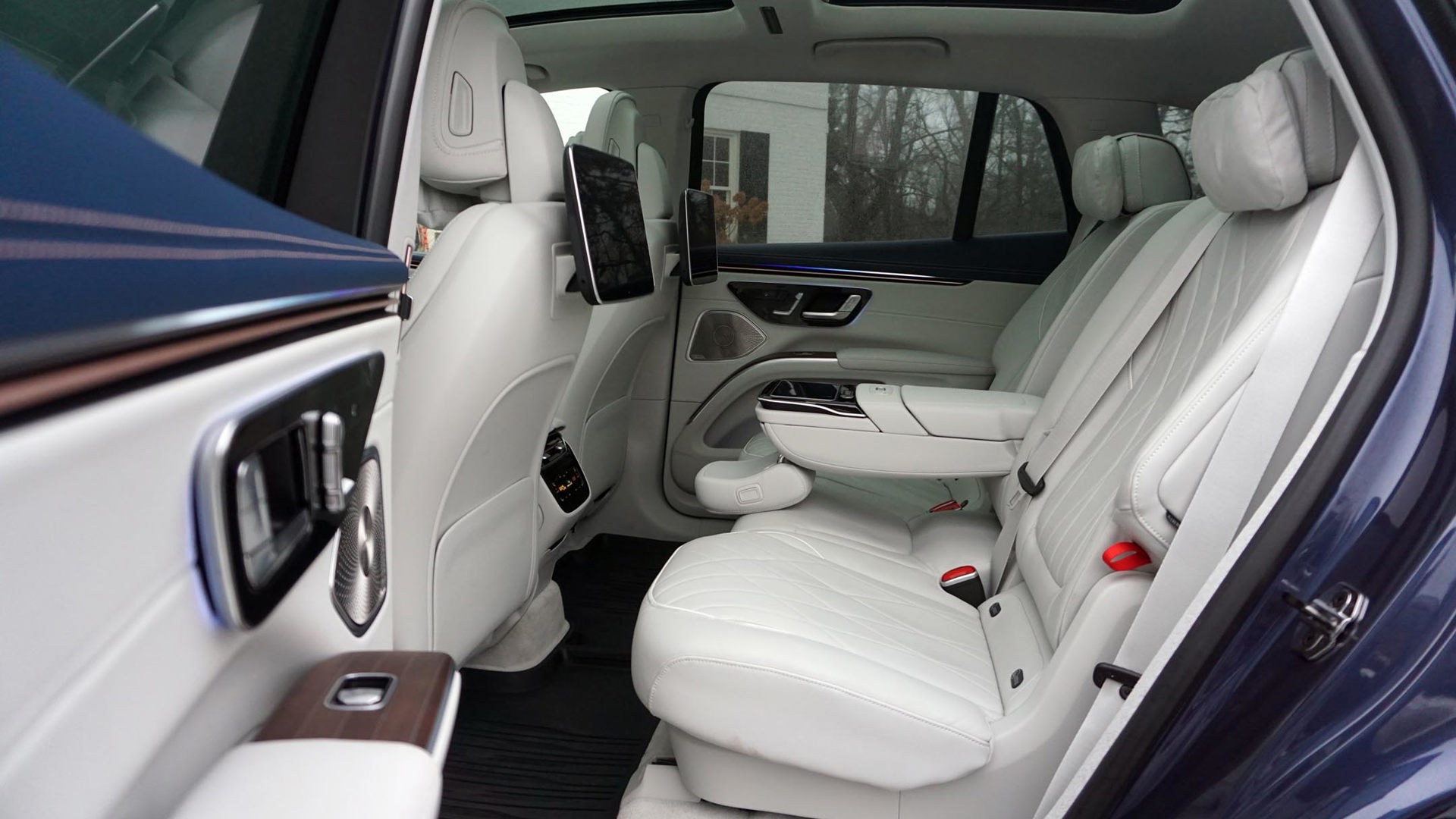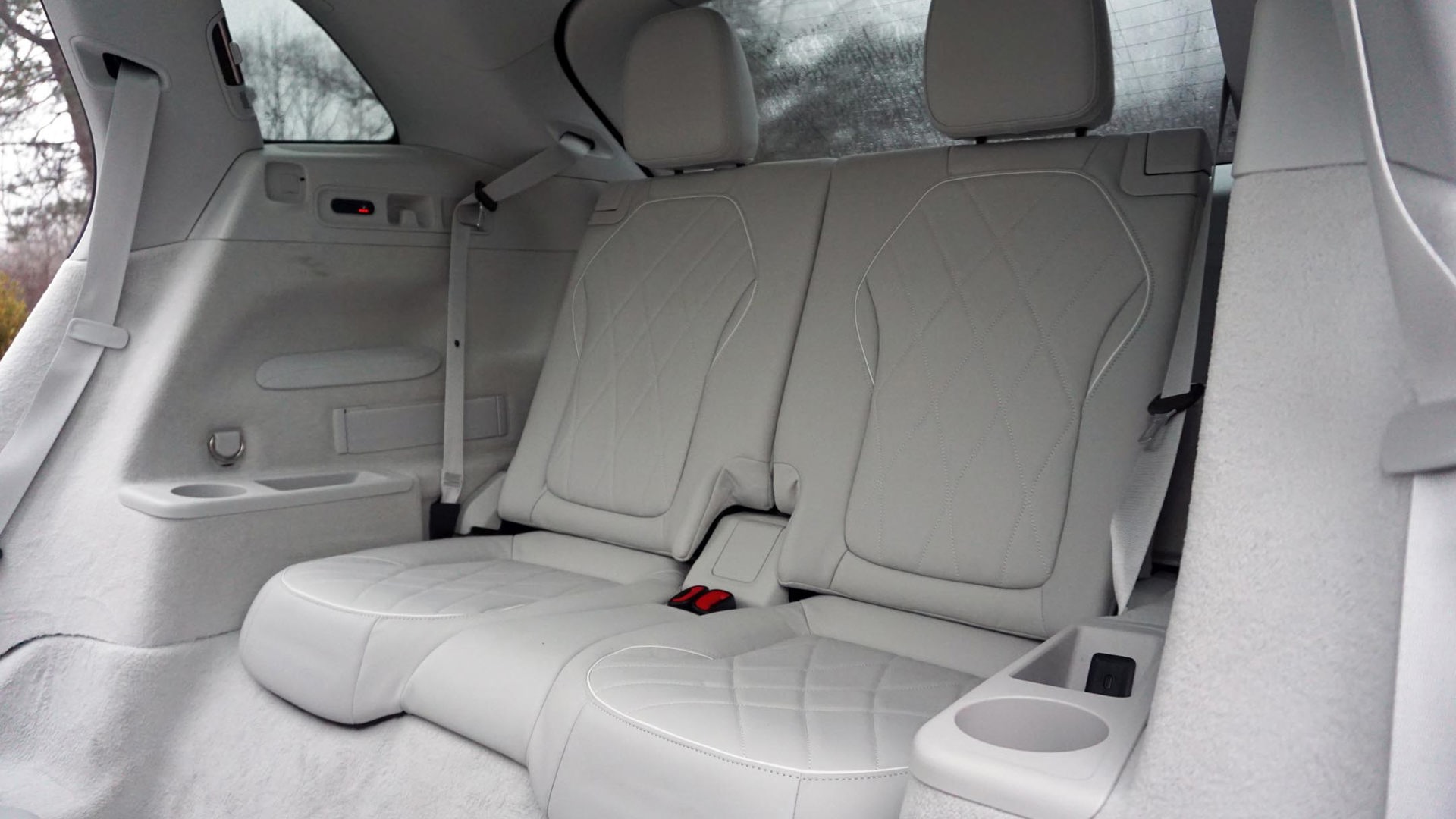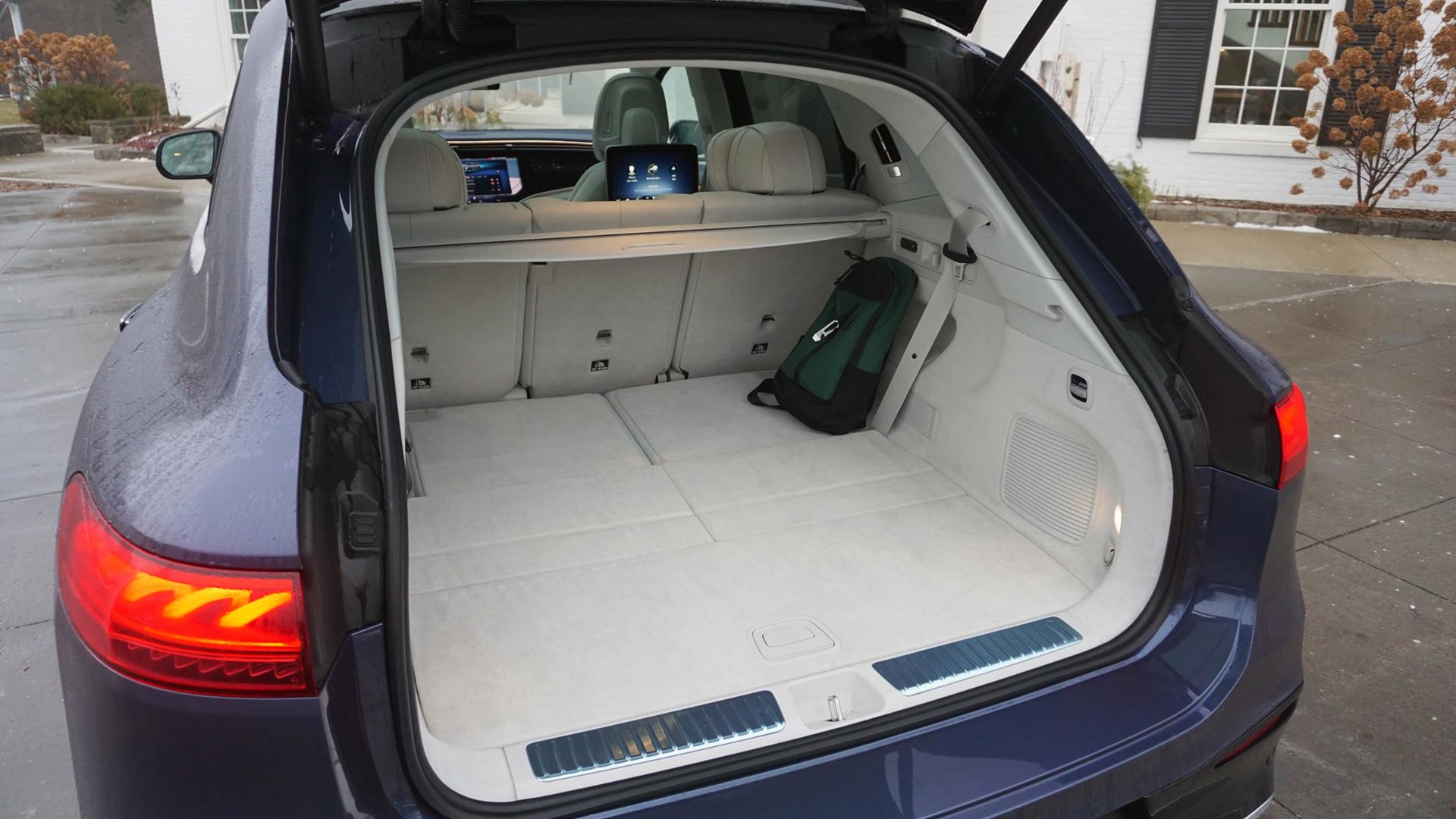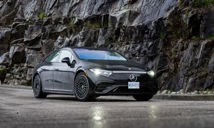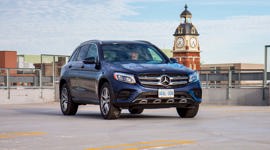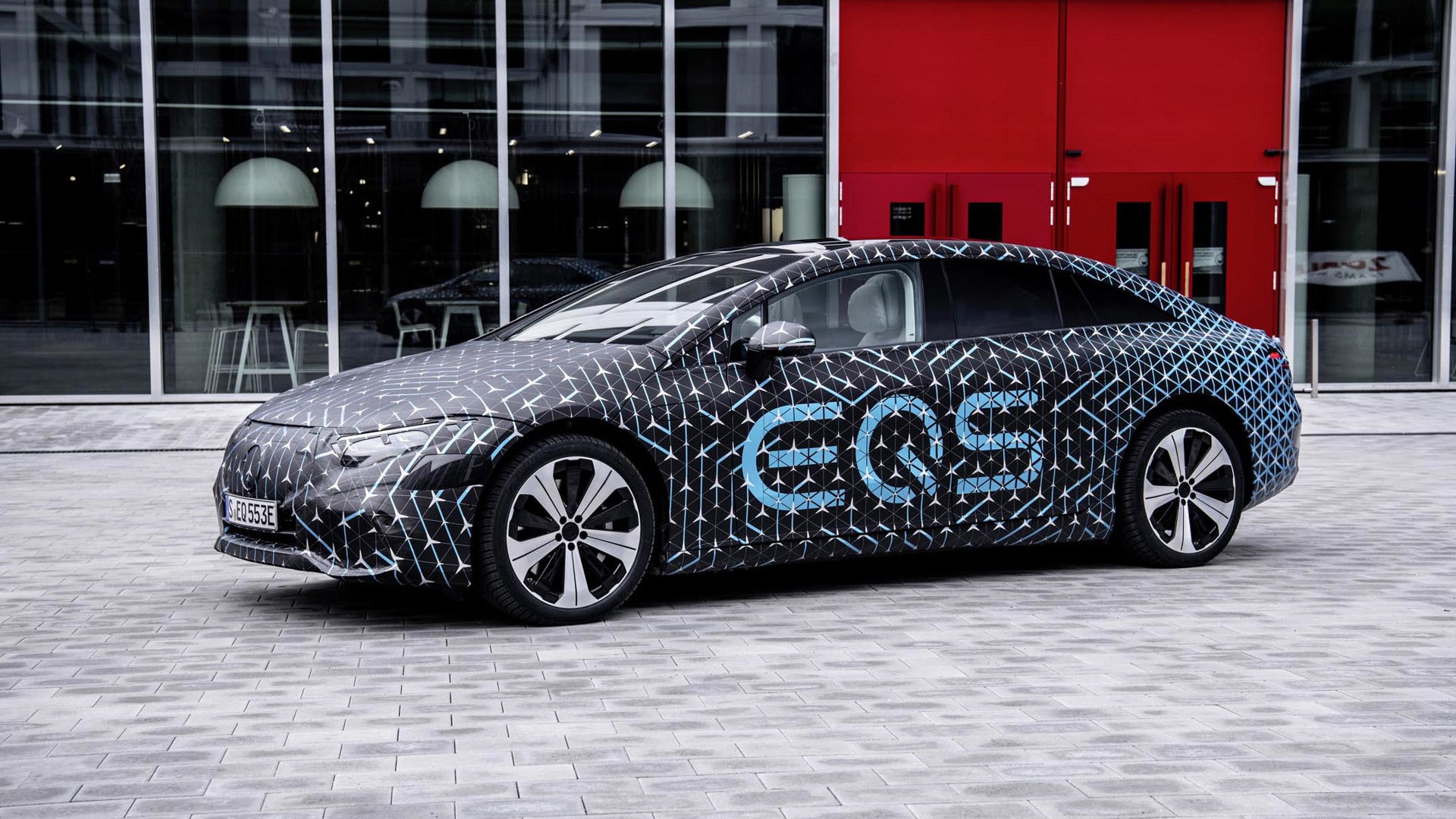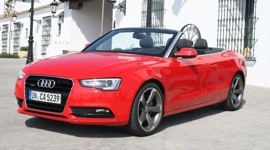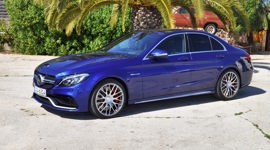 AutoTrader SCORE
AutoTrader SCORE
-
STYLING10/10
-
Safety9/10
-
PRACTICALITY9/10
-
USER-FRIENDLINESS7/10
-
FEATURES10/10
-
POWER10/10
-
COMFORT9/10
-
DRIVING FEEL9/10
-
FUEL ECONOMY9/10
-
VALUE7/10
I’m not much of a prognosticator, but I’d have to imagine the 2023 Mercedes-Benz EQS SUV has a fighting chance of surpassing the Tesla Model X for supremacy in their small but expanding segment.
No, it doesn’t have gimmicky gullwing doors, nor does it share Tesla’s engageable fart mode (yes, really). But that’s why I’m convinced this all-electric offering has what it takes to become the leader amongst six-figure sport utilities like it. Beyond subtle styling hints about how it’s powered, the EQS SUV is downright normal, not to mention properly luxurious. If you’re looking to shell out big bucks on a family-sized electric vehicle (EV), look no further.
Styling: 10/10
So about the styling. It’s all fairly conventional – not that anything else in the Mercedes stable looks quite like the EQS SUV, but then the fact it’s an EV isn’t as glaringly apparent as you might expect, either. The most obvious sign that something’s different about this sport utility is the grille, or rather the smooth plastic panel that’s in the place usually reserved for one. The EQS 580 SUV adds a classy repeating tri-point star pattern, while those looking to make an even bolder statement can add a lighted emblem to the front end for $250.
The interior can be outfitted with the choice of a dozen different leathers and a number of trims, including a trio of open-pore wood options (like the striped “ship’s deck” finish seen here), all of which plays up this EV’s luxurious disposition. But it’s the so-called hyperscreen that’s the centre of attention, with some 1,422 mm (56 in) of glass spanning the dash across three separate displays: one for instrumentation, another for infotainment, and a separate screen in front of the passenger seat.
User-Friendliness: 7/10
The sheer amount of digital information being served up while behind the wheel can be a little overwhelming at first, while the interface itself isn’t the most intuitive. For instance, there’s no traditional home screen; instead, the default is a massive map view that occupies almost the entire central display. And while any number of the various features and functions can be called up by simply beckoning the voice assistant, it can’t perform simple tasks like switch over to Apple CarPlay – that must be done manually by tapping a tiny icon in the top left corner, or finding it through the menu.
On that note, Mercedes has addressed its biggest infotainment blunder in recent years by having that smartphone mirroring system – as well as Android Auto – occupy nearly the entire central screen that spans 17.7 inches here. Left to be addressed are the touch sensors on the steering wheel that are used for volume control and instrument display adjustments, among others. Simply put, they’re finicky and frustrating to use, especially compared to simple buttons and dials.
Features: 10/10
That dash-dominating hyperscreen is a $9,900 standalone option in the EQS 450 SUV, but it’s standard in the range-topping version tested here. Likewise, other high-end features in this tester like the massaging front seats and twin second-row entertainment screens are pricey add-ons in both trims. Those familiar with the premium shopping experience will know that’s par for course, with brands like Mercedes notorious for their expansive – and expensive – options lists. But the bigger takeaway is that those features can be had in the first place, which can’t be said about the Model X (or any other Tesla, for that matter).
It’s not as if everything here is reserved for the options list, with a twin-pane panoramic sunroof (the one in the back is fixed), acoustically insulated glass, dual-zone automatic climate control with a HEPA filtration system, EV range-based satellite navigation, and a 15-speaker stereo. There’s also wireless Apple CarPlay and Android Auto, subscription-based satellite radio, and over-the-air updates, among others.
Options, meanwhile, range from those twin second-row touchscreens to an augmented reality head-up display (HUD) system that projects big, bright graphics onto the windshield including navigation instructions – handy for even the most directionally challenged drivers out there. Other packages include massaging front seats, in-vehicle Wi-Fi, five-zone automatic climate control, and a stowable set of third-row seats.
Safety: 9.5/10
Breaking from tradition for a luxury brand like this one, a full suite of advanced safety and driver-assistance features is standard in the EQS SUV. That means everything from blind-spot monitoring, front and rear cross-traffic alert with pedestrian detection and automatic emergency braking, and lane-keeping assistance are all standard, as is stuff like adaptive braking that can imperceptibly apply the brakes when it’s raining to sweep water from the discs.
There’s also an adaptive cruise control system that works in stop-and-go traffic, and can automatically change lanes when prompted by the driver. Simply activate the signal and the system will handle the rest (assuming the adjacent lane is clear, of course). As an added bonus, the optional augmented reality HUD projects massive dynamic green arrows on the windshield to indicate what’s happening in real-time.
Other features include surround-view monitoring, a self-parking system that can pull in and out of both perpendicular and parallel spots, rain-sensing wipers, and automatic adaptive high-beams. There’s also seven airbags throughout the cabin, plus predictive sensors that can tighten the seatbelts, close the windows, and pre-emptively apply the brakes in anticipation of a collision.
Power: 10/10
The EQS SUV uses twin electric motors for propulsion, with one each for both front and rear wheels. The EQS 450 generates a combined 335 hp to go with 590 lb-ft of torque, while the EQS 580 sees those numbers jump to 516 hp and 632 lb-ft of torque. This being an EV, it’s exceptionally quick when called upon, with all that torque coming online as soon as it’s requested.
Fuel Economy: 9/10
The novelty of scampering to 100 km/h in less than half the time it takes an Olympic sprinter to do the 100-metre dash wears off pretty quickly, if I’m honest. Instead, it’s easy to get fully immersed in matters of efficiency, and this sport utility is happy to oblige. For example, the regenerative braking can be adjusted through normal, smart, or strong settings, the latter of which ratchets it up to include proper one-pedal driving.
Now, the estimated range of 459 km isn’t enough to jump off this page. It’s also a little less than what the Model X can do on a full charge, with estimates of 529 to 565 km for the dual-motor version, and 499 to 539 km for the tri-motor Plaid model. Even so, the 459 km the EQS SUV is supposed to provide is fairly competitive – and accurate.
Driving Feel: 9/10
A cold and rainy range test covering a little more than 200 km, most of which was racked up on the highway, saw the big Mercedes burn through exactly 50 per cent of its 107.8-kWh battery pack. Given EVs tend to consume more energy out on the open road than they do around town, that effective efficiency – theoretically losing just 59 km of range – is impressive. A similar test of the Chevrolet Bolt EUV saw its range drop at a rate of nearly 2:1 for every kilometre travelled.
With standard rear-axle steering, the EQS SUV is able to cut a tighter turning circle than you might expect – particularly with the upgraded 10-degree system (standard is a 4.5-degree setup). Likewise, the adaptive air suspension does well to control body movement when switching back and forth on winding country roads, although it’s nearly impossible to hide a curb weight of more than 2,800 kg (6,173 lb).
Comfort: 9/10
With the vast majority of that weight sitting just below the cabin’s plush carpeting, where the battery resides, and low-profile tires wrapped around the massive 21-inch wheels, deep cracks in the pavement are more than a little jarring; however, the ride is impeccable otherwise, with the ability to cruise around quietly and comfortably.
The front seats offer what seems like endless adjustability, while the optional massage functionality that’s part of the Premium package ($8,500) includes more than a half-dozen programs to pick from. Rear-seat occupants don’t benefit from the same upgrades, although even the optional third row can be heated – albeit for $1,500. That’s on top of the $2,400 it takes to add the stowable seats in the first place.
Practicality: 9/10
Opting for that extra set of seats technically provides space inside for seven occupants, but just remember: this isn’t the GLS-Class. Even young children are likely to take issue with the accommodations back there, which aren’t exactly generous. However, the second-row is spacious, while the cargo room behind it is more than reasonable in spite of the 651 L listed on the spec sheet.
The front half of the cabin has a sort of wrap-around effect that starts on the doors and spans the dash to create a proper cockpit. But the dashboard itself sits so incredibly high that I’ve never felt smaller behind the wheel of a vehicle. It’s not enough to hinder visibility, but it certainly takes some getting used to.
Value: 7/10
Determining value with a vehicle like this is difficult, although Tesla has provided a bit of a baseline with its similarly sized Model X that starts around $143,000 before tax, while the tri-motor Plaid version is priced at $157,000. Let’s put it like this: I don’t think it’s a coincidence that the 2023 Mercedes EQS 450 SUV starts at $136,000, while the EQS 580 SUV comes in at $158,500.
The Verdict
I’m not here to pick a fight with Tesla fans, but there’s simply no arguing that the Model X can compete with Mercedes when it comes to luxury. That’s on full display with the 2023 Mercedes-Benz EQS SUV, which leaves little to be desired – and that’s exactly what it should do at this price point.
It may not offer as much range as its rival, but it makes up for it with standard and optional features that dial up the opulence and make the EQS SUV feel special in its own way. Either way, I’m sure we can all agree that there’s nothing wrong with a little variety – even when it comes to six-figure EVs like this – and it’s great to see a brand like Mercedes finally rising to the challenge.
| Engine Displacement | 400 kW |
|---|---|
| Engine Cylinders | Dual electric motors |
| Peak Horsepower | 516 hp |
| Peak Torque | 632 lb-ft |
| Fuel Economy | 3.0 / 3.2 / 3.1 Le/100 km city, hwy, cmb, 26.1 / 28.0 / 27.3 kWh/100 km; 459 km est. range |
| Cargo Space | 651 / 2,095 L seats up/down |
| Model Tested | 2023 Mercedes-Benz EQS 580 SUV |
| Base Price | $158,500 |
| A/C Tax | $100 |
| Destination Fee | N/A |
| Price as Tested | $186,100 before destination |
|
Optional Equipment
$27,500 – Premium package, $8,000; MBUX high-end rear-seat entertainment system, $5,000; Premium rear seating package, $4,000; MBUX augmented reality head-up display, $3,100; Third-row seating, $2,400; Exclusive Nappa leather package, $2,000; Heated third-row seats, $1,500; Rear automatic climate control, $1,500
|
|

